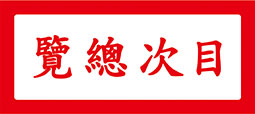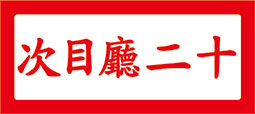The world has seen plenty of calligraphy couplets. During Chinese New Year they are especially hung or pasted in quantity. However no one has heard of couplets that combine calligraphy and painting. The tz’u poet Mr. Soong Hsün-leng (宋訓倫先生) wrote a pair of calligraphy couplets for his son, his tz’u companion Ms. Chou Lien-hsia (周鍊霞女士) painted and embellished them with a painting of prunus and bamboo. The calligraphy and painting complement each other, their spontaneity and elegance are further enhanced. Those from the past did not attain this peculiar delight. In his numerous letters to the son, Mr. Soong Hsün-leng described in detail the process of creating the couplets from beginning to end. The letters chronicled the journey of this artistic endeavor. Such a record is indeed precious. Reading these letters can indeed illuminate the intellectual and emotional depths of the couplets.
Curatorial and Editorial Department
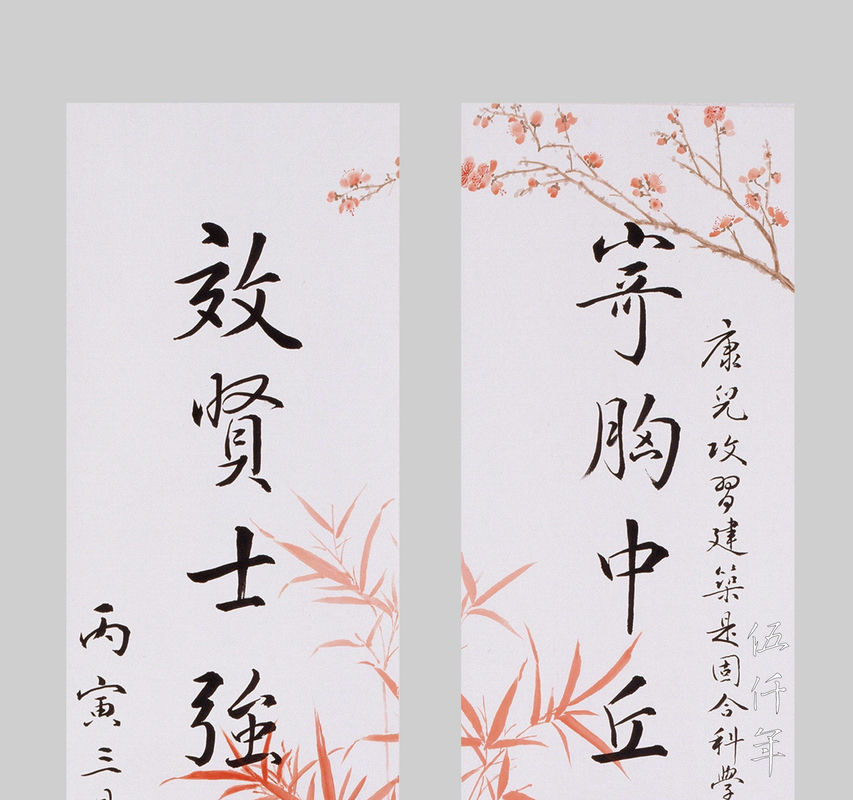
Detail of the pair of couplets by Mr. Soong Hsün-leng and Aunt Chou Lien-hsia
Whenever stern fathers convey affection for their children, they mostly abandon gentle expressions and temperate words, instead they assume solemn appearances and deliver words of admonishment. This is not so unlike the way earnest instructions were dispensed by my father Mr. Soong Hsün-leng (宋訓倫). In his letters, guidances and encouragements were articulated with candour and urgency. From the age of sixteen when I travelled to Britain for education, to the age of forty eight when my father passed away, in a span of thirty two years, his letters amount to more than a thousand. His supervisions and promptings were never unconsidered. Only at my current age of sixty, can I now appreciate the depths of his concerns concealed in the fine details of his writings.
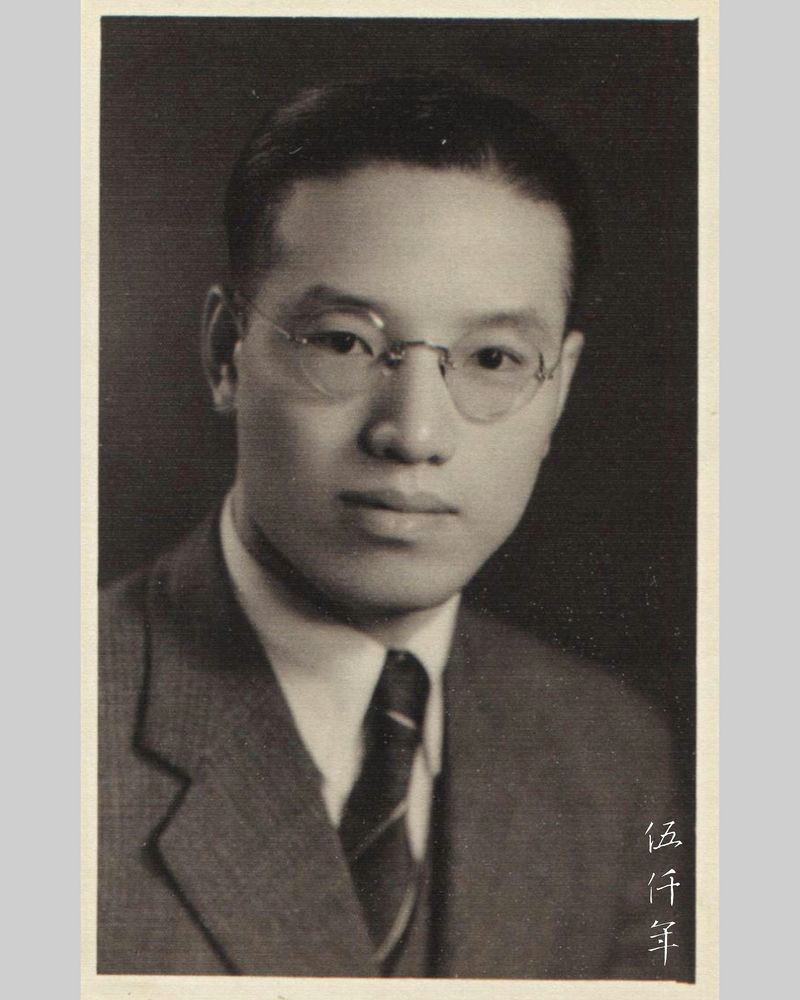
Portrait of Mr. Soong Hsün-leng
In the 72nd year of the Republic (1983), I received the bachelor degree from University College London, and went on to study at the Architectural Association School of Architecture. Sometime in late February, the 75th year of the Republic (1986), I implored my father to write a pair of calligraphy couplets for me. I had already been given two pieces of calligraphy by my father, a piece written on a fan and another piece written on a horizontal scroll. To acquire an additional format was cause for gratification.
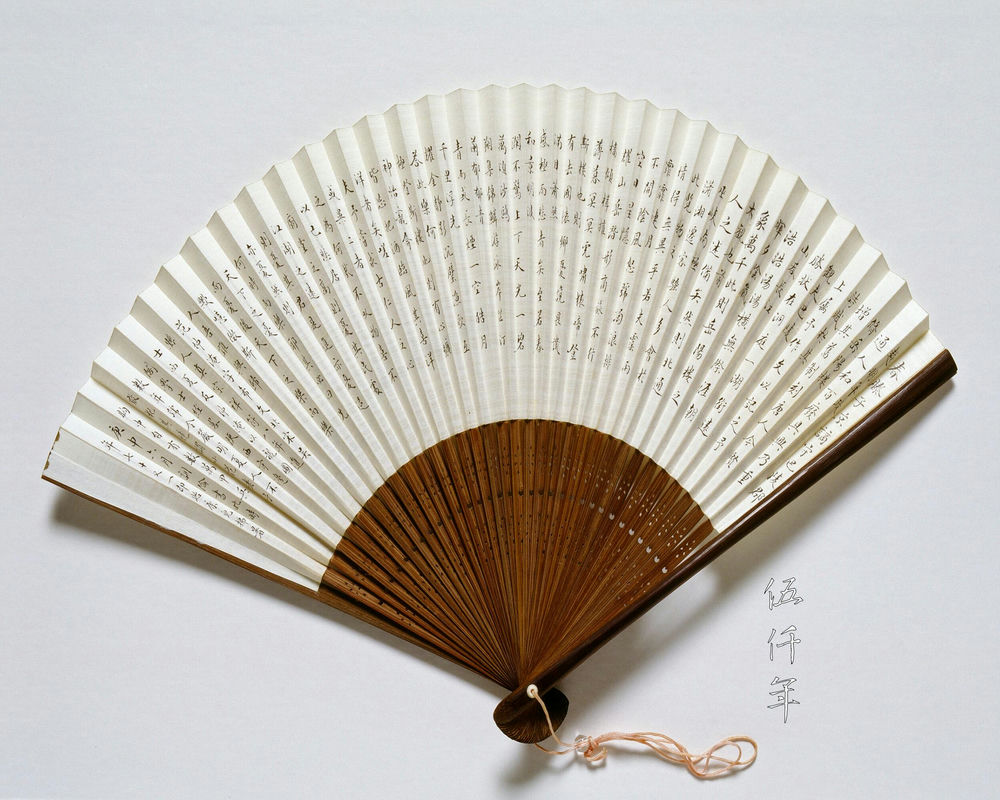
Regular script miniature calligraphy on fan by Mr. Soong Hsün-leng dated 1980. The calligraphy copies the text of Story of Yüeh-yang Lou (岳陽樓記) by Fan Chung-yen (范仲淹 989-1052)
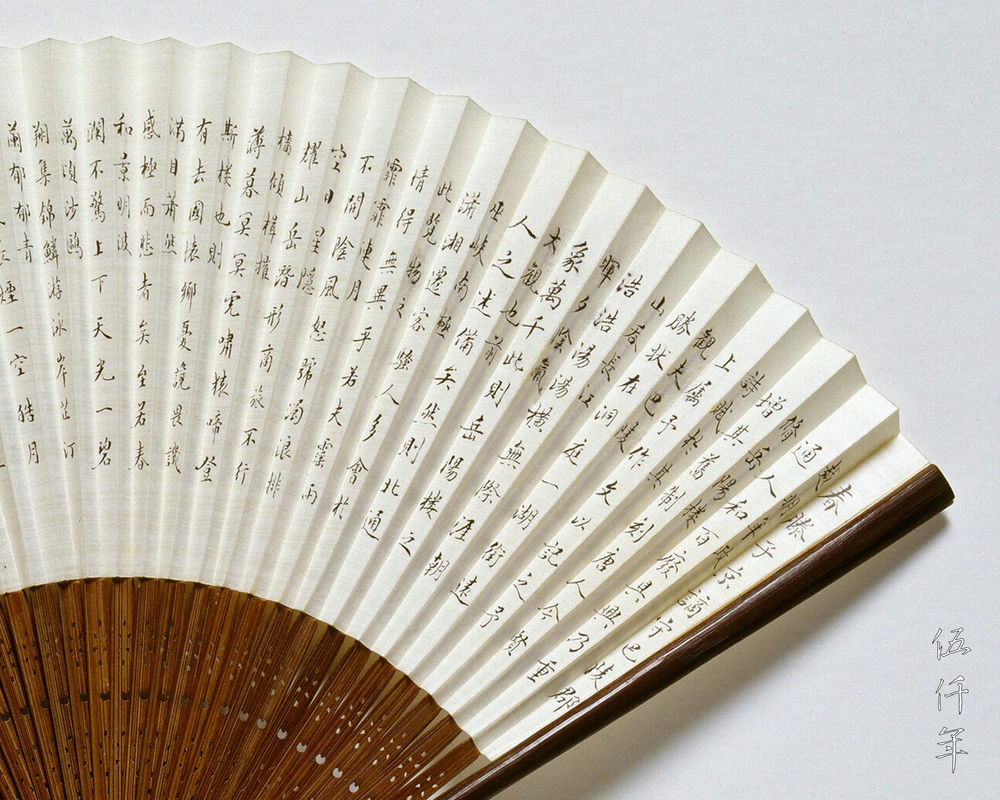
First detail of regular script miniature calligraphy on fan by Mr. Soong Hsün-leng dated 1980. The calligraphy copies the text of Story of Yüeh-yang Lou (岳陽樓記) by Fan Chung-yen (范仲淹 989-1052)
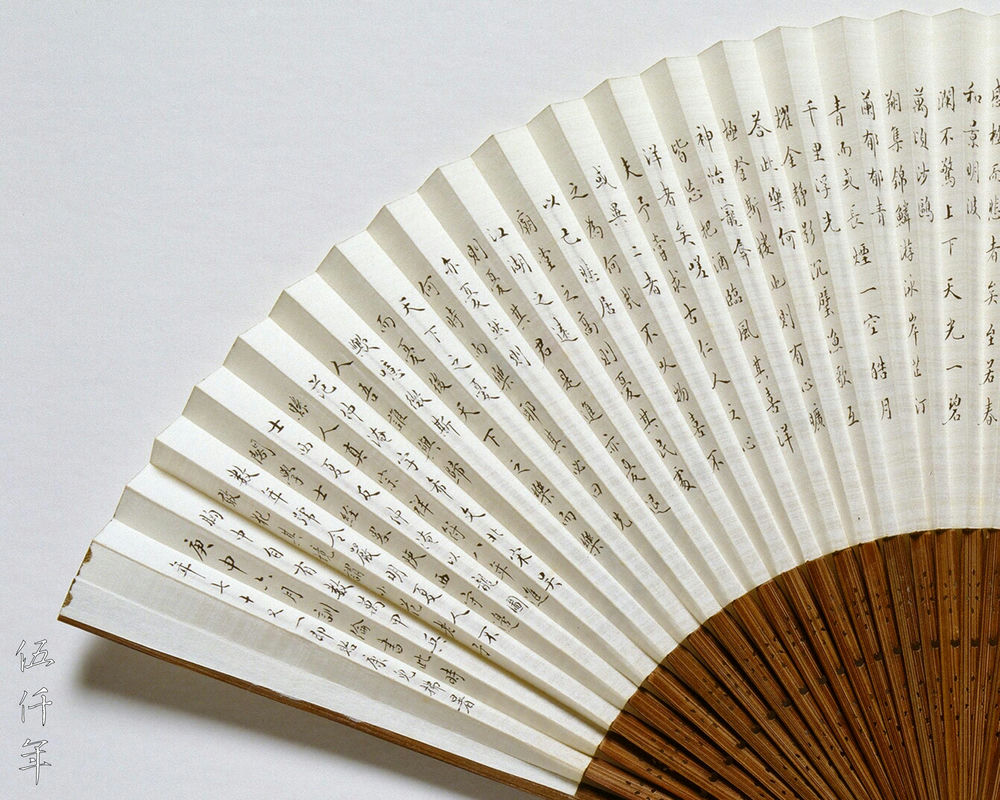
Second detail of regular script miniature calligraphy on fan by Mr. Soong Hsün-leng dated 1980. The calligraphy copies the text of Story of Yüeh-yang Lou (岳陽樓記) by Fan Chung-yen (范仲淹 989-1052)
Calligraphy was a self indulgent pleasure for my father. He was not a professional calligrapher, yet he attained a unique individualism in his calligraphic expression. According to his own scrutiny, his calligraphy was derived from the works of Wang Hsi-chih (王羲之 303-361), Chao Meng-fu (趙孟頫 1254-1322), Tung Ch’i-ch’ang (董其昌 1555-1636), T’ang Po-hu (唐伯虎 1470-1524) and others, attaining the delight of lightness and vigour.
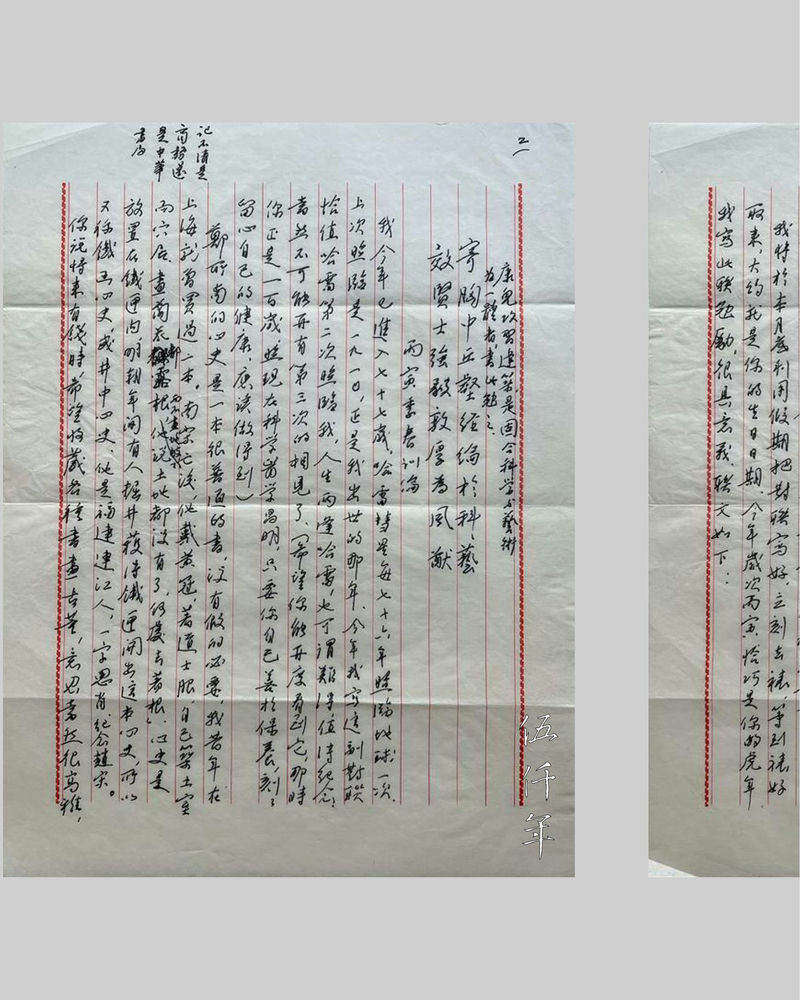
Sections from page one and page two of letter by Mr. Soong Hsün-leng dated 17th March 1983
On 17th March in the 72nd year of the Republic (1983), I received a letter from my father. It reads:
“I am going to write the pair of couplets during the holidays near the end of this month. Then it will be sent for mounting immediately, when it is done, it will roughly coincide with your birthday. According to the sexagenary cycle, we are in ping-yin year, which happens to be your zodiac year, the Year of the Tiger. It is particularly meaningful for me to write this pair of couplets to motivate you. The words of the couplets are:
My son Kong studies and practices architecture which synthesises science and art into one entity. This was written as an encouragement.
‘Endow the hills and rivers in the heart to master the discipline of science and art,
Emulate the vigour and will of the virtuous to gain the comportment of genuineness.
March of ping-yin year, Hsün-leng.’
I am approaching seventy seven this year. Every seventy six years, Halley’s Comet passes over the earth once. Last time it passed over was 1910, precisely the year I was born. Writing the couplets this year, Halley’s Comet passes over me again for the second time. To encounter Halley’s Comet twice in a life can be considered remarkable, worthy of remembrance. Of course it is not possible to come across it the third time round. (I hope you can see it again, by then you will be a hundred. In view of our current advancements in science and medicine, as long as you take good care of yourself, pay attention to your health all the time, it should be achievable.)”
Fine years had drifted by and twilight was closing. He could only covet his son’s longevity.
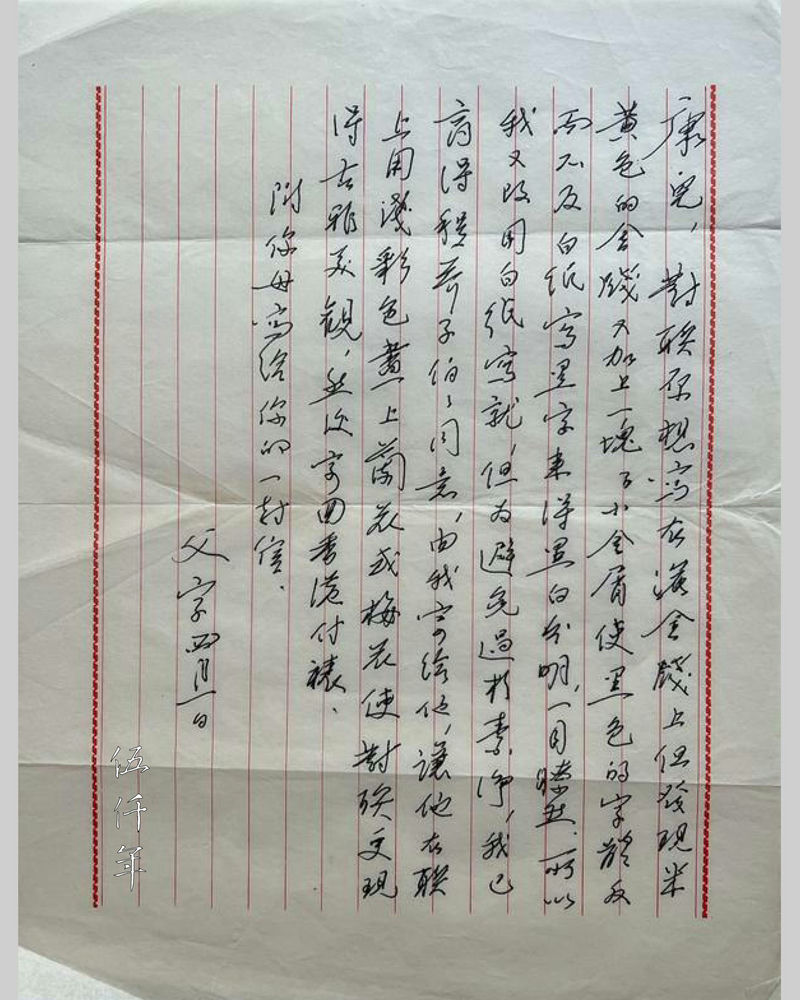
Letter by Mr. Soong Hsün-leng dated 1st April 1983
On 1st April in the same year, my father wrote another letter to describe experimenting with sprinkle gold paper and white paper. He also mentioned asking Uncle Ch’eng Chieh-tzu (程芥子), a painter friend, to decorate the couplets with paintings. One could discern the attentiveness lavished on this task. The letter reads:
“My original intention was to write on sprinkle gold paper. However I realized that black ink characters on light yellow paper with sprinkling of gold specks did not compare well with black ink characters on white paper. The latter has the clarity of black upon white, the characters are effortlessly intelligible at a glance. Hence I decided to write on white paper, but to avoid being too plain, I have obtained the consent of Uncle Ch’eng Chieh-tzu that I will mail him the couplets, and he will paint on them either coloured orchids or prunus, so that they will be more archaic and visually appealing. He will then mail them back to Hong Kong for mounting.”
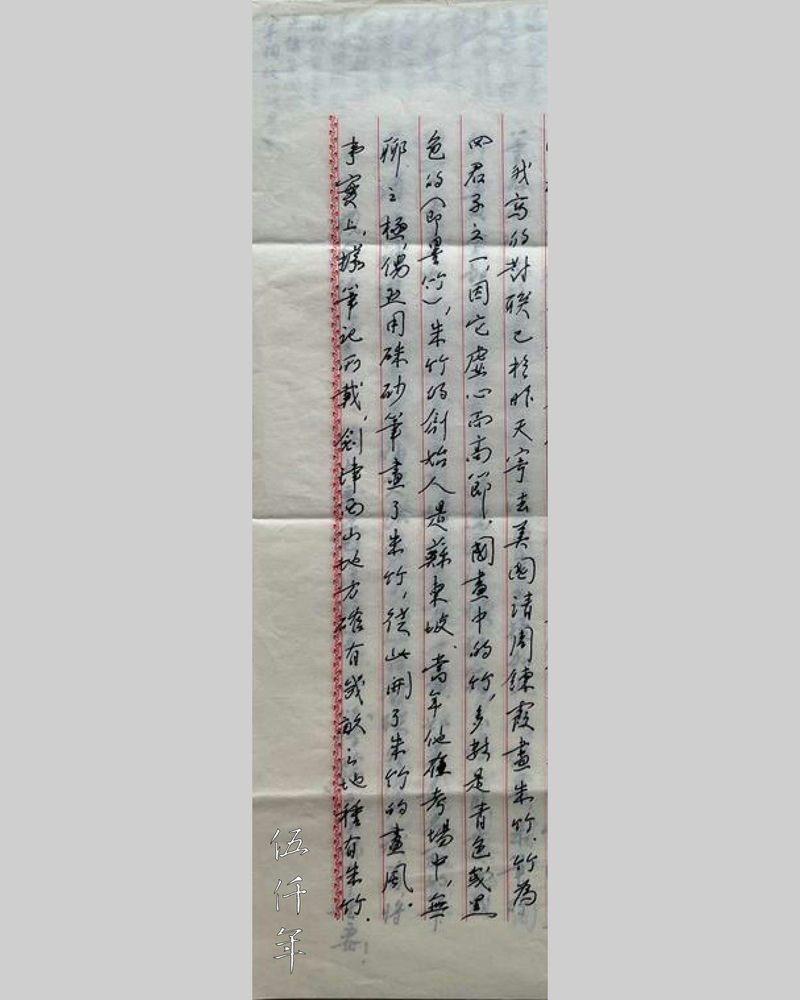
Section from page one of letter by Mr. Soong Hsün-leng dated 27th April 1983
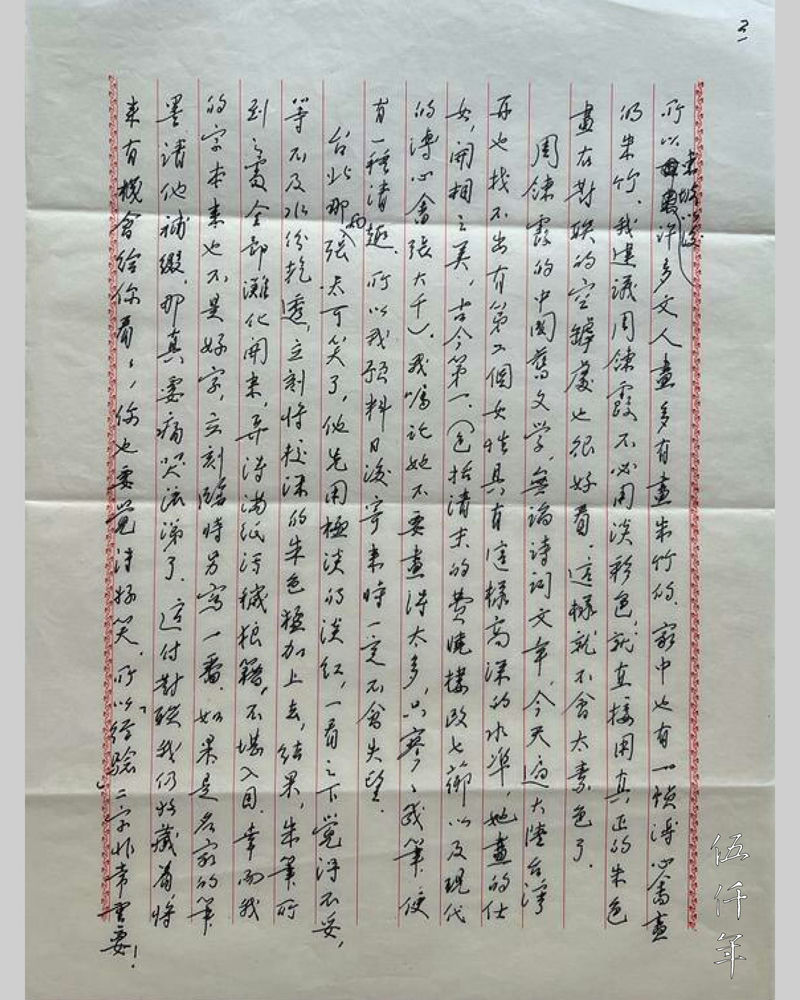
Second page of the letter by Mr. Soong Hsün-leng dated 27th April 1983
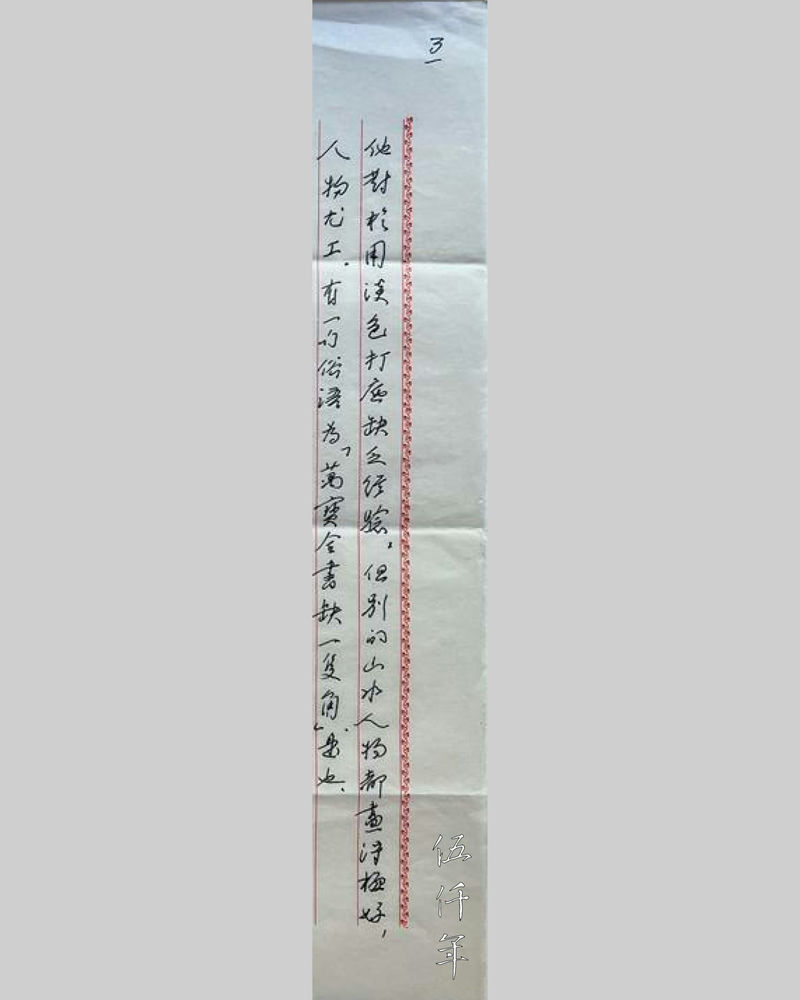
Section from page three of the letter by Mr. Soong Hsün-leng dated 27th April 1983
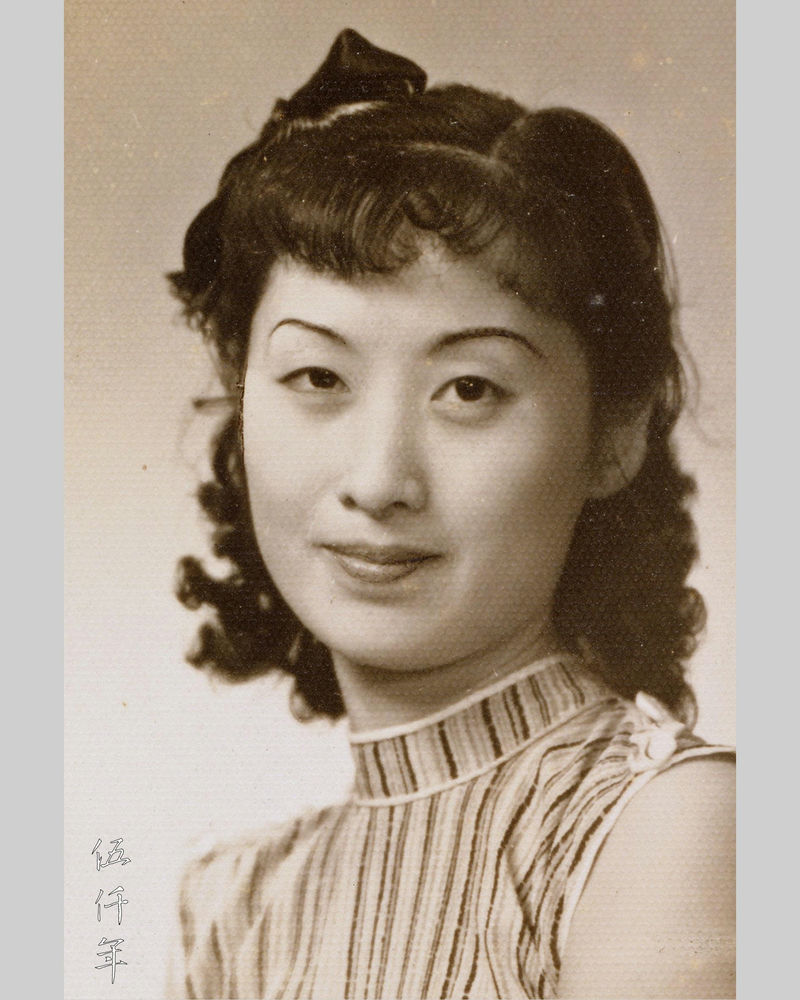
Portrait of Aunt Chou Lien-hsia
In little time, the painted couplets by Uncle Ch’eng Chieh-tzu were mailed back to Hong Kong. My father was not happy with them. He decided to ask his intimate friend Aunt Chou Lien-hsia (周鍊霞) who was living in America to paint them instead. Aunt Chou Lien-hsia (1909-2000), hao Lo-ch’uan-tzu, native of Chi-an, Kiangsi Province. Her virtuosities in poetry, tz’u lyrics, calligraphy and paintings are venerated in mainland China and overseas. My father’s letter of 27th April reads:
“The calligraphy couplets I wrote were mailed to Chou Lien-hsia in America yesterday, she can thus paint vermilion bamboo on them. Bamboo is categorized as one of the four plants known as the Four Gentlemen (prunus, orchid, bamboo and chrysanthemum). This is because bamboo is considered to possess humility and high integrity. In Chinese painting bamboo is mostly coloured in green or black (as in ink bamboo). Painting of vermilion bamboo was first executed by Su Tung-p’o (also known as Su Shih 蘇軾 1037-1101). At one time, he was in the imperial examination hall and totally bored. By chance he used some cinnabar material with his brush and painted vermilion bamboo. This began the fashion of painting vermilion bamboo. Actually, according to ancient texts, there were a few acres of vermilion bamboo in Hsi-shan (西山) of Chien-chin (劍津). Many literati followed Su Tung-p’o to paint vermilion bamboo. In our house there is a painting of vermilion bamboo by P’u Hsin-yü (also known as P’u Ju 溥儒 1896-1963). I suggested to Chou Lien-hsia not to use light colour, she can directly apply vermilion colour to paint onto the empty spaces of the couplets. It will look appealing and not too plain.
As for Chou Lien-hsia’s mastery of classical literature, be it poetry, tz’u lyrics or prose, it is no longer possible to find a second woman of her profound standard across mainland China and Taiwan today. Regarding her female figure paintings, the beauty conveyed by their facial outlines is unrivaled in history (even comparing to the works by the late Ch’ing figure painters such as Fei Hsiao-lou 費曉樓, Kai Ch’i-hsiang 改七薌, or the contemporary painters such as P’u Hsin-yü 溥心畲, Chang Ta-ch’ien 張大千). I asked her not to over paint, a few simple strokes will be elegant and charming enough. So I anticipate when the couplets arrive some days from now, one will definitely not be disappointed.
The two couplets from Taiwan were quite ludicrous. He first employed a very light red, then he realized it was inappropriate. He could not wait for the water to dry thoroughly and he immediately plunged the darker vermilion onto the paper. The result was wherever the vermilion brush stroked, the colour spread, the whole paper was spoiled and messed. It was unsightly. Fortunately, my calligraphy is not some fine work of art in the first place. I promptly wrote another pair in that moment. If these were calligraphic works by famous artist and he was asked to embellish them, one would only be left wailing tearfully. I have kept this pair of couplets, and I will show you in the future. You will find this comical. Therefore, ‘experience’ is very important! He is inexperienced with the underlay of light colour, but he is brilliant in landscape and figure paintings. Indeed he is particularly outstanding in figure paintings. There is a pertinent colloquial saying: ‘An encyclopedia missing a corner’.”
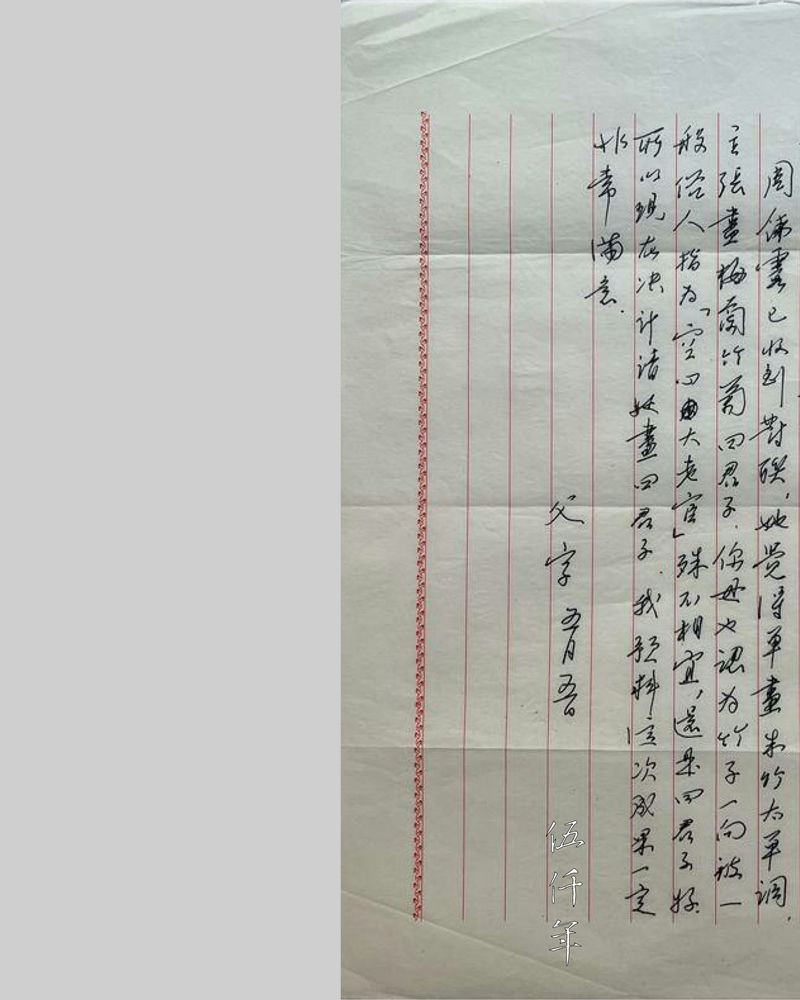
Section of letter by Mr. Soong Hsün-leng dated 5th May 1983
Although my father claimed he kept the couplets, I have never seen them. They must be torn and discarded long ago. For the pair of couplets that were sent to America, should they be embellished with vermilion bamboo, or prunus and bamboo, or the Four Gentlemen of prunus, orchid, bamboo and chrysanthemum? My father, my mother and Aunt Chou Lien-hsia repeatedly discussed the matter. In my father’s letter dated 5th May, he wrote:
“Chou Lien-hsia has already received the pair of couplets. She thinks just painting vermilion bamboo is too simplistic. She advocates painting the Four Gentlemen: prunus, orchid, bamboo and chrysanthemum. Your mother also thinks that bamboo has been customarily referred by ordinary people as ‘someone who cultivates a facade but is devoid of practicality.’ It is wholly inappropriate. The Four Gentlemen are more preferable. Hence I am determined to ask her to paint the Four Gentlemen. I anticipate the result this time will be most satisfactory.”
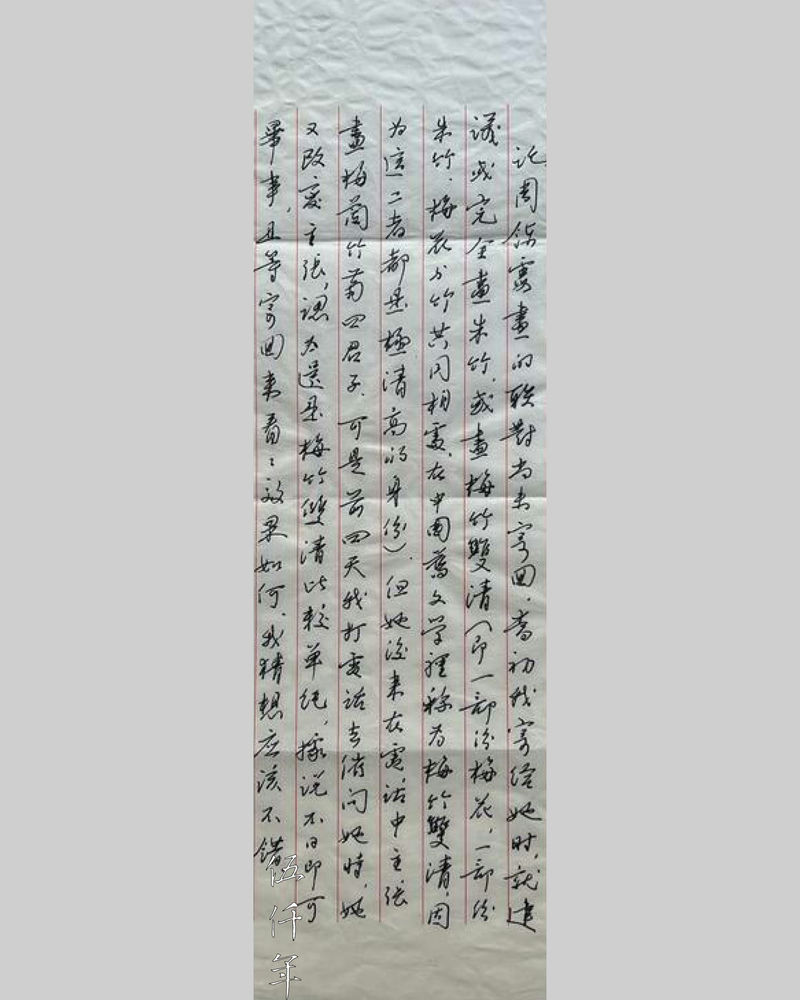
Section from page one of letter by Mr. Soong Hsün-leng dated 27th May 1983
However, the letter dated 27th May reads:
“The pair of couplets entrusted to Chou Lien-hsia to be painted are not back yet. When I first delivered them to her, I suggested that she could paint vermilion bamboo, or the unworldly duo of prunus and bamboo. (A part prunus, a part bamboo. Chinese classical literature refers to their pairing together as the unworldly duo of prunus and bamboo, because they are both regarded as exceedingly lofty in character.) However, she later suggested over the phone that she would paint the Four Gentlemen of prunus, orchid, bamboo and chrysanthemum. But four days ago when I called to hasten her, she changed her mind once more, she believed the unworldly duo of prunus and bamboo would be more straightforward. According to her, it would be finished very soon. Just got to wait for them to be returned and then find out the outcome. I guess they should be pretty good…..
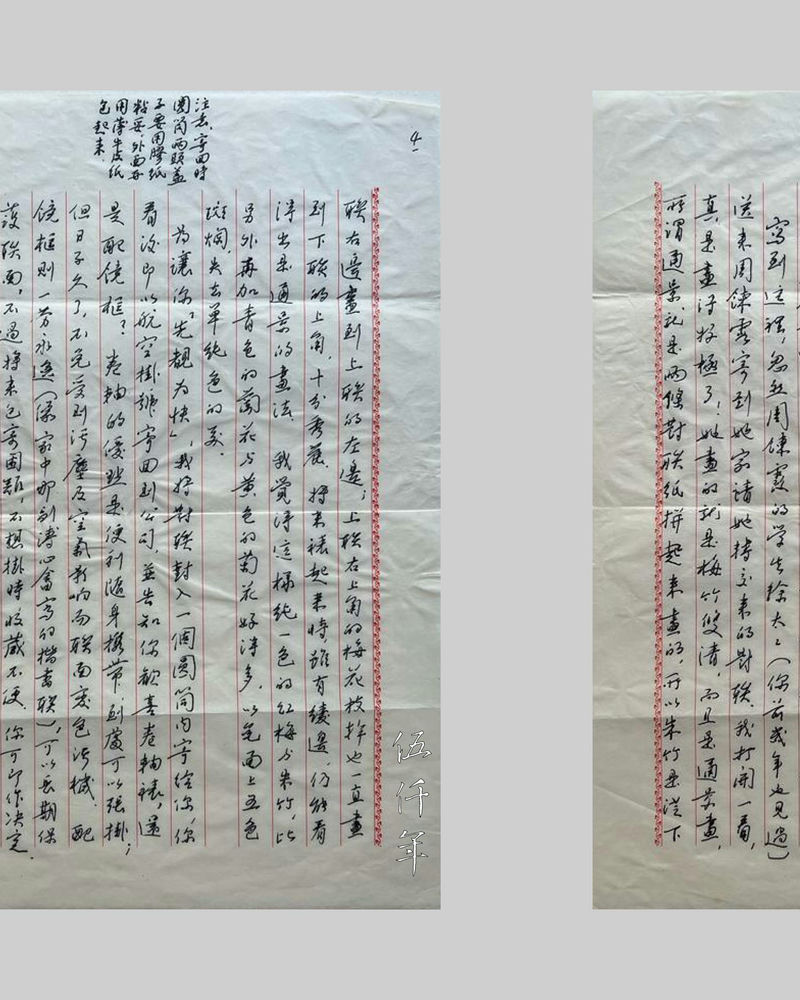
Sections from page three and page four of the letter by Mr. Soong Hsün-leng dated 27th May 1983
As I am writing this letter, a student of Chou Lien-hsia, Mrs. Hsü (whom you saw a few years ago) suddenly came to deliver the pair of couplets that Chou Lien-hsia mailed her with instructions to pass on to me. I opened the package, and it was truly well painted! She had indeed painted the unworldly duo of prunus and bamboo. Furthermore it is a diptych. A diptych means that the paintings on the two couplets join together to become one. Therefore the vermilion bamboo was painted from the lower right of the left couplet (lower scroll) to the left of the right couplet (upper scroll), the stem of the prunus was painted from the upper right corner of the right couplet (upper scroll) to the upper right corner of the left couplet (lower scroll). They are very elegant. When they are mounted in the future, despite the silk border, it will still be possible to identify these paintings in the manner of a diptych. I think the singular colour of vermilion for prunus and bamboo, is far better than the addition of green orchid and yellow chrysanthemum. If the surfaces have too many colours, the beauty of simplicity will be lost.
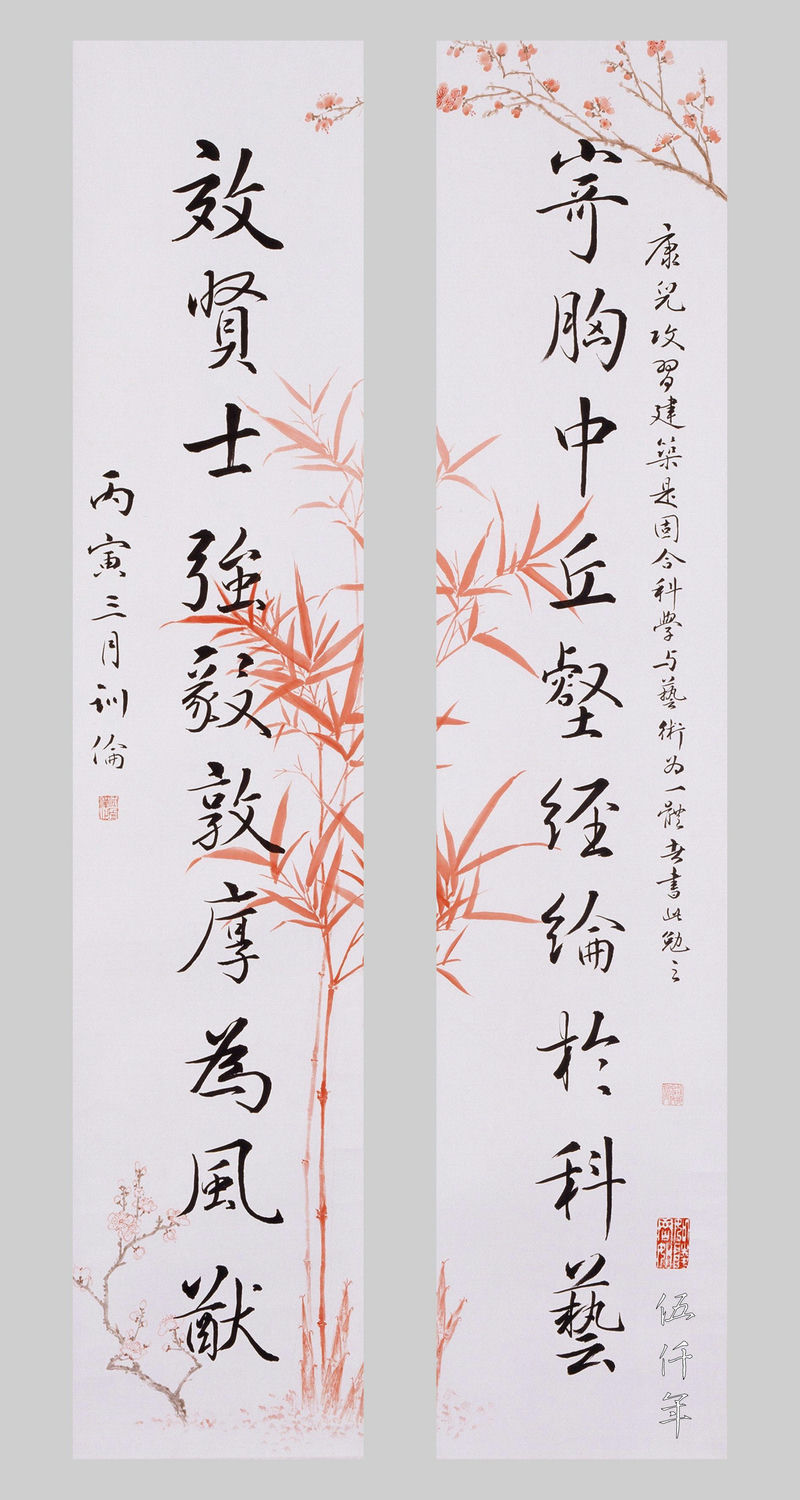
The pair of couplets by Mr. Soong Hsün-leng and Aunt Chou Lien-hsia
For you to gain the ‘thrill of seeing them first’, I will seal the pair of couplets in a circular tube and send them to you. After you have seen them, send them back to the office by registered air mail, and tell me your preference of mounting them as scrolls or in frames. The advantage of scrolls is that they are easy to carry and they can be hung anywhere. But as time goes by, it is inevitable that they will be affected by dust and air, the surfaces of the couplets will be dirty and change colour. Framing them is a long term solution (like the pair of couplets in regular script by P’u Hsin-yü in the house), the surfaces of the couplets can be protected for a long time. However they will be difficult to pack and send in the future. When you no longer want to hang them, they are inconvenient to store. You can quickly decide.”
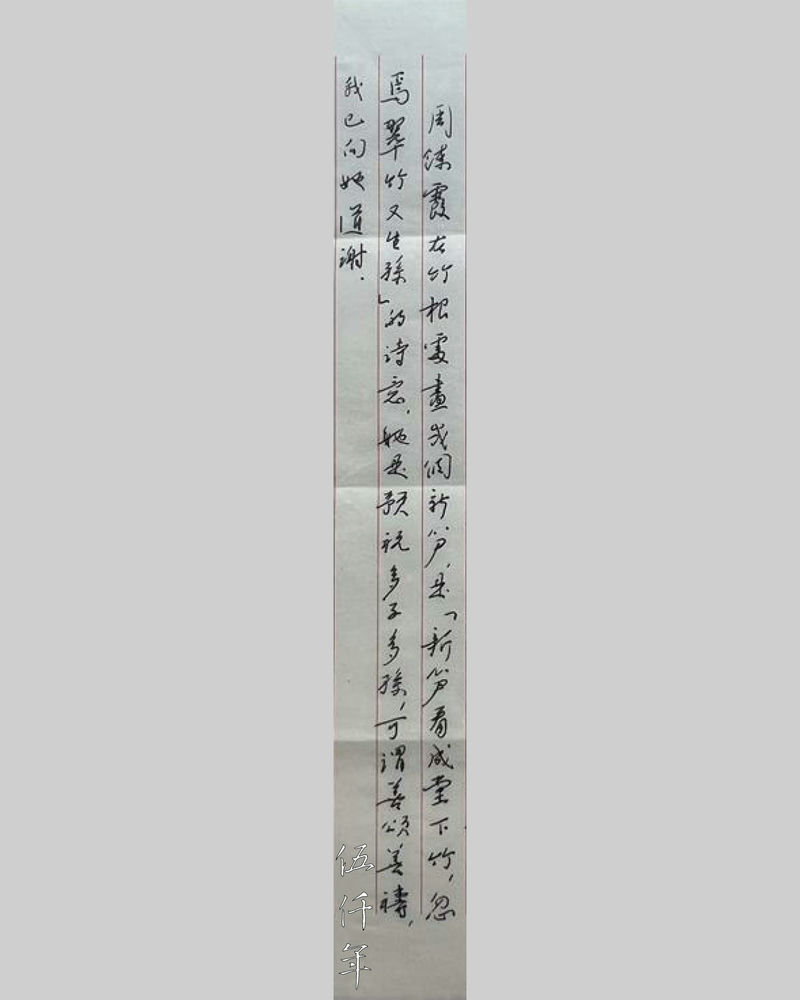
Section from page one of letter by Mr. Soong Hsün-leng dated 2nd June 1983
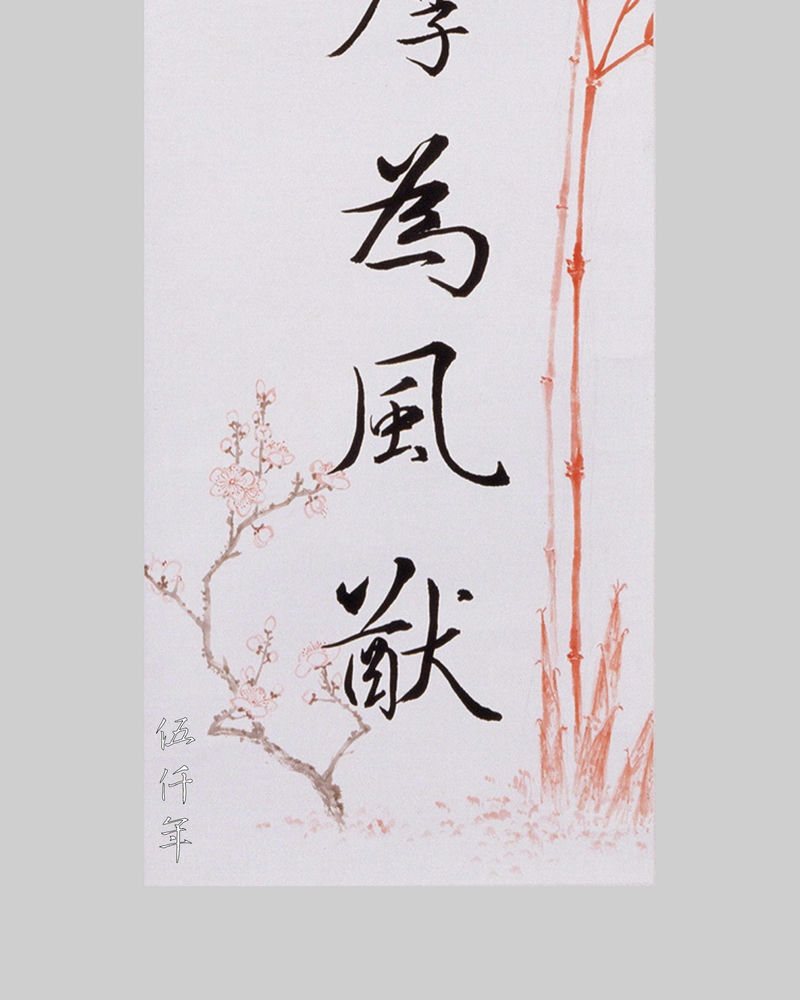
Fresh sprouts at the base of the couplet painted by Aunt Chou Lien-hsia
Aunt Chou Lien-hsia eventually settled to paint prunus and bamboo after numerous back and forth considerations. It is obvious this was undertaken with gravity. My father’s letter dated 2nd June reads:
“Near the roots of the bamboo, Chou Lien-hsia painted a few fresh sprouts. This is allusion to the poem:
Fresh sprouts have grown into bamboo by the hall,
Green bamboo swiftly gives birth to sprouts anew.
She is giving early compliments to the arrival of children and grandchildren, and this is her blessing and felicitation. I have already thanked her for that.”
Only then I realized that the painting of prunus and bamboo by Aunt Chou Lien-hsia had introduced deeper allusion beyond.
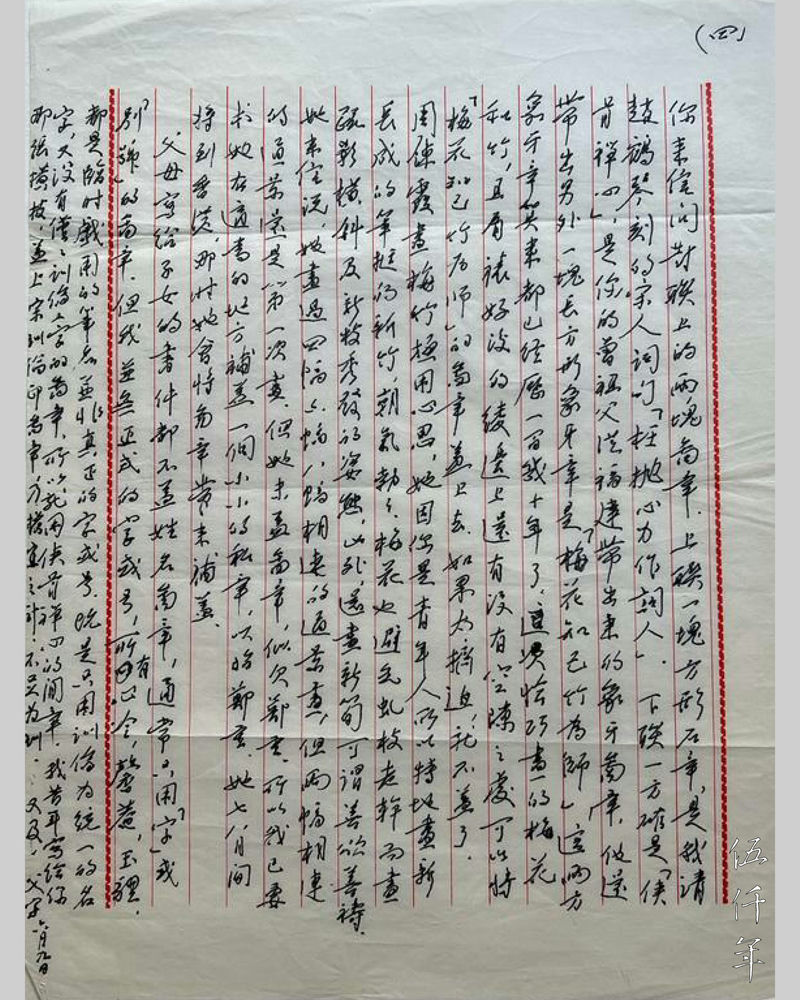
Page four of letter by Mr. Soong Hsün-leng dated 9th June 1983
In my father’s letter dated 9th June, he discussed extensively the seal impressions on the couplets. He wrote:
“You wrote to enquire about the two seal impressions. The impression on the right couplet (upper scroll) was made by a square stone seal. It was engraved by Chao Ho-ch’in (趙鶴琴) at my request, the sentence was derived from the words of a tz’u poet in the Sung dynasty (960-1279):
‘I have dispensed futile labour to become a lyric poet (枉拋心力作詞人).’
The impression on the left couplet (lower scroll) is:
‘Chivalrous bearing and zen heart (俠骨禪心).’
This is an ivory seal your great grandfather brought to Shanghai from his posting in Fukien Province. He also brought along a rectangular ivory seal carved with these characters:
‘Prunus is my confidant and bamboo is my tutor (梅花知己竹為師).’
These two ivory seals are already a hundred and some dozen years old. Coincidentally, this is a painting of prunus and bamboo. After it is mounted, if there is sufficient space at the silk border, the seal ‘Prunus is my confidant and bamboo is my tutor’ can be impressed. If it is too tight, then it will not be impressed.
Chou Lien-hsia had put in a lot of thoughts to paint the prunus and bamboo. As you are a young man, she especially painted new upright bamboo that was full of vigour. For prunus, she too avoided twisted branch and aged stem, instead she painted sparse shadows and horizontal postures, the comportment of these new branches thrive gracefully. Moreover, she painted fresh sprouts which can be considered her blessing and felicitation. In her letter, she recalled she had painted diptych works with six scrolls and eight scrolls, but this was her first attempt at diptych work with two scrolls. However she did not impress her seal, it seemed too informal. I therefore requested that she should make remedy by impressing a small seal, to be located somewhere appropriate to demonstrate solemnity. She will be coming to Hong Kong in July and August, she will bring a seal to add on its impression.
When parents write to children, they do not impress seals with their surnames nor original names. By custom only seals engraved with tzu or hao are used. Nevertheless I do not have a proper tzu or hao. For the names of Hsin-leng, Hsin-an, Yü-li, they are all temporary nom de plume for amusement, they are not genuine tzu nor hao. Since Hsün-leng is the only standard name, and I do not have a seal with just the characters Hsün-leng, so I use the playful seal of ‘Chivalrous bearing and zen heart.’ The horizontal scroll I wrote for you some years ago, was impressed with the seal ‘Seal of Soong Hsün-leng’. It was out of expediency and it should not be regarded as correct form.”
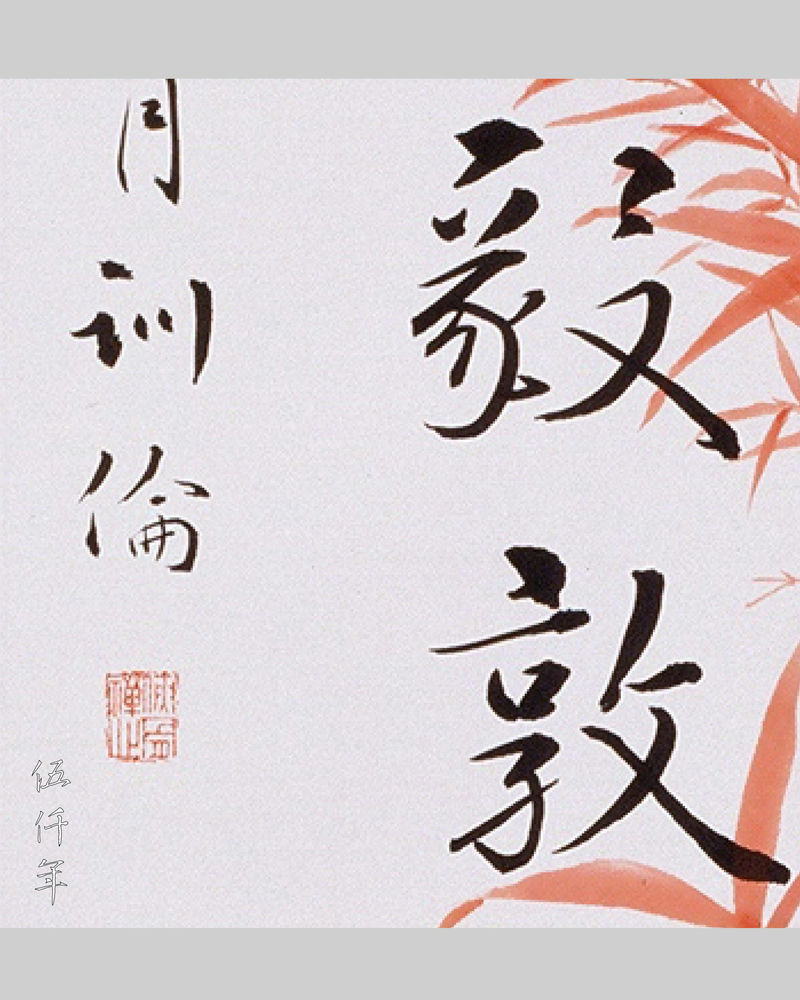
The seal impression “Chivalrous bearing and zen heart” was affixed under the signature on the left couplet (lower scroll)
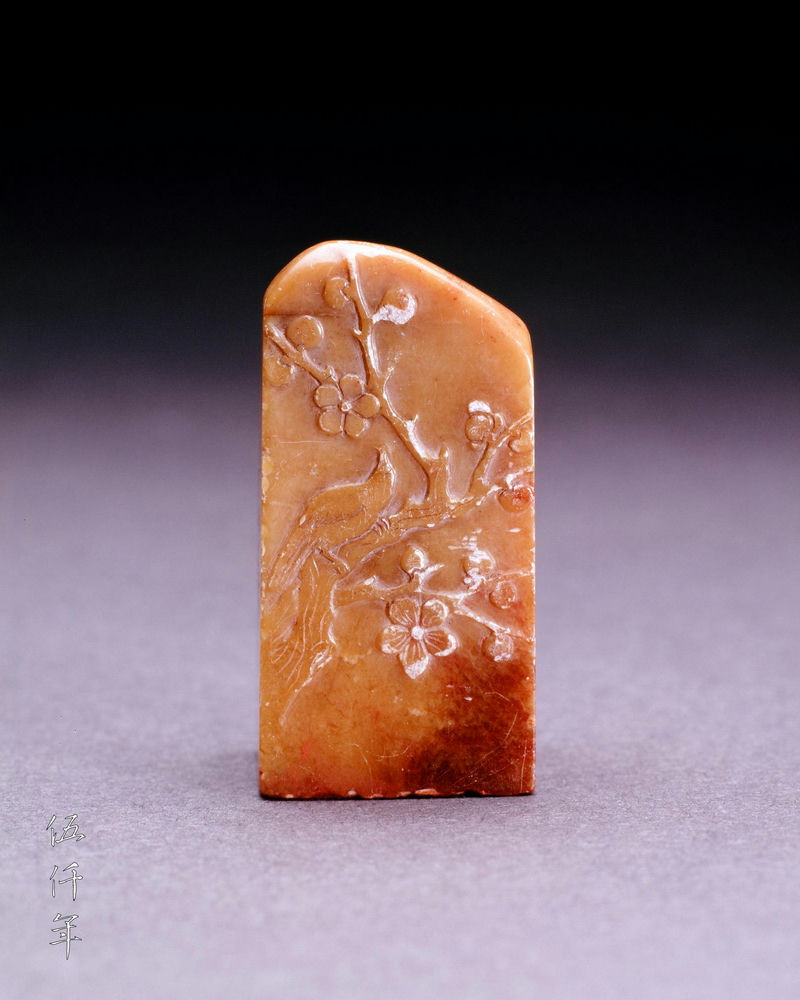
The seal carved with the characters “Chivalrous bearing and zen heart”
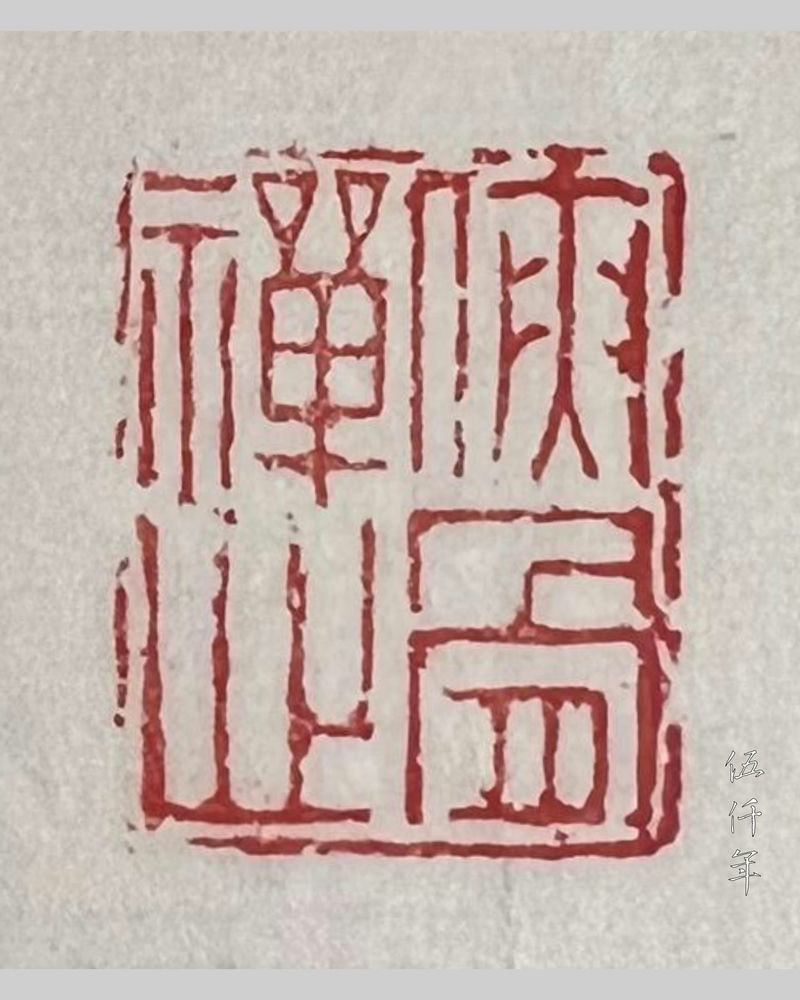
The seal impression “Chivalrous bearing and zen heart”
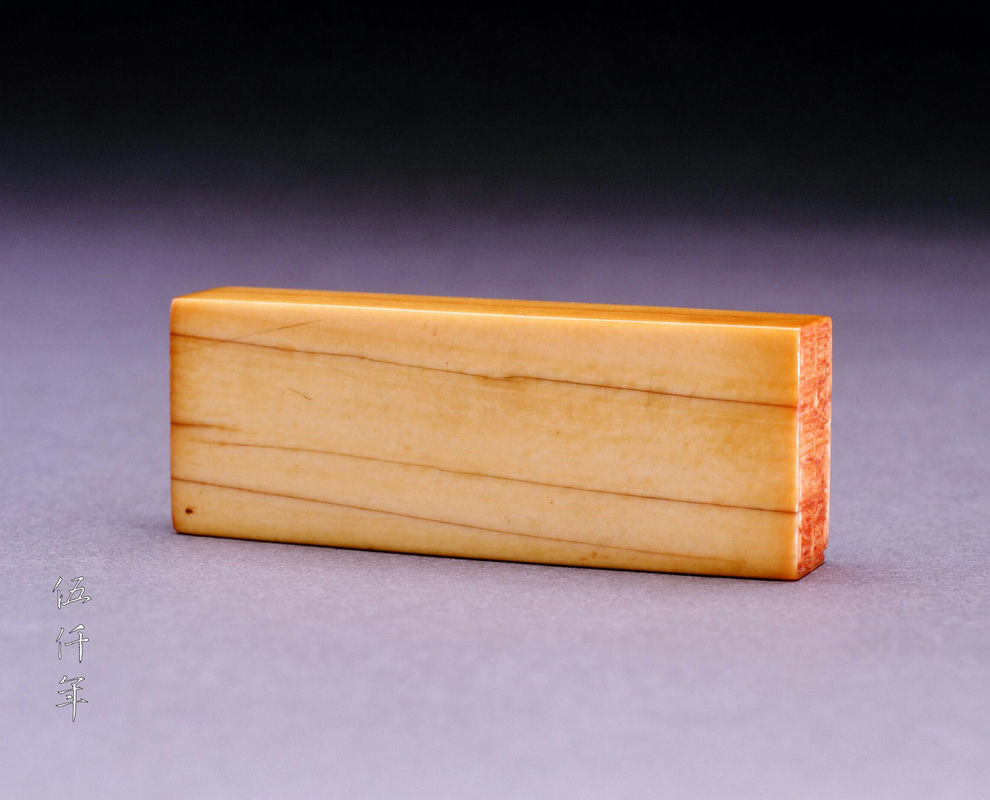
The two sided ivory seal with engravings on both ends
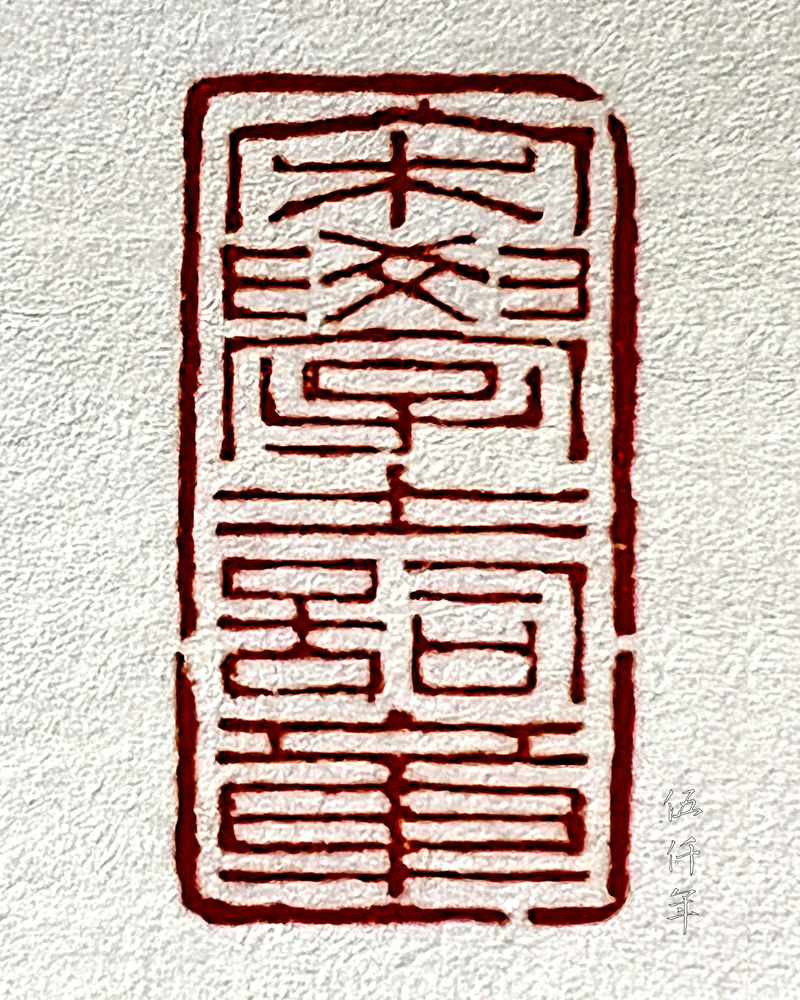
The seal impression “Tz’u lyrics and prose by scholar Soong” made from the two sided ivory seal
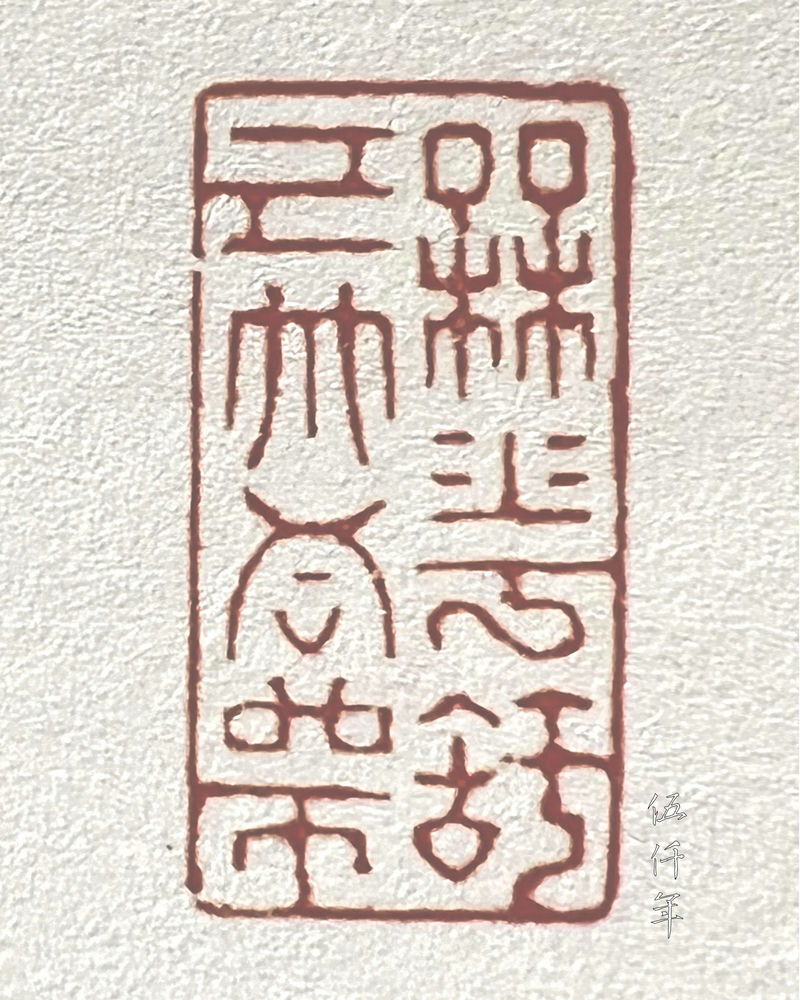
The seal impression “Prunus is my confidant and bamboo is my tutor” made from the two sided ivory seal
The seal “Chivalrous bearing and zen heart” mentioned in the letter is a stone seal. It was erroneously recalled as an ivory seal. The seal “Prunus is my confidant and bamboo is my tutor” is a two sided ivory seal, the other side has the engraved characters: “Tz’u lyrics and prose by scholar Soong (宋學士詞章).” Both seals were used by my great grandfather the Hon. Soong Tzu-ho, original name Tsun-wang (宋子鶴, 宋尊望). For these seals to remain in the possession of his descendants has not been an easy feat.
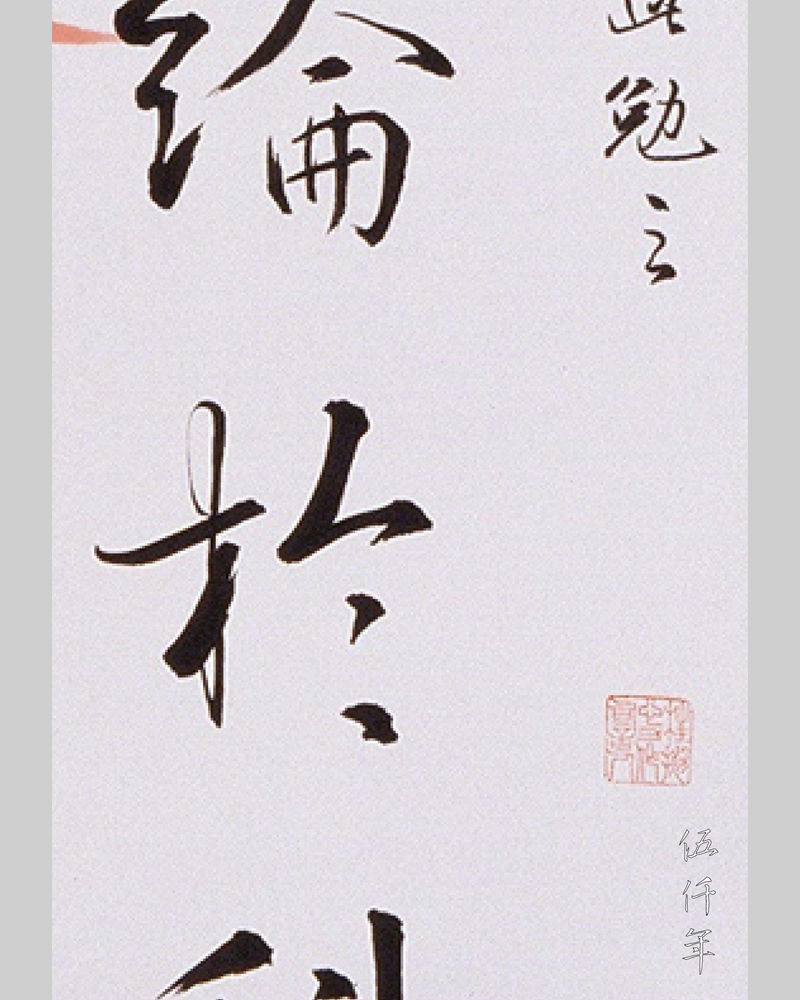
The seal impression “I have dispensed futile labour to become a lyric poet” was affixed on the lower part of the right couplet (upper scroll)
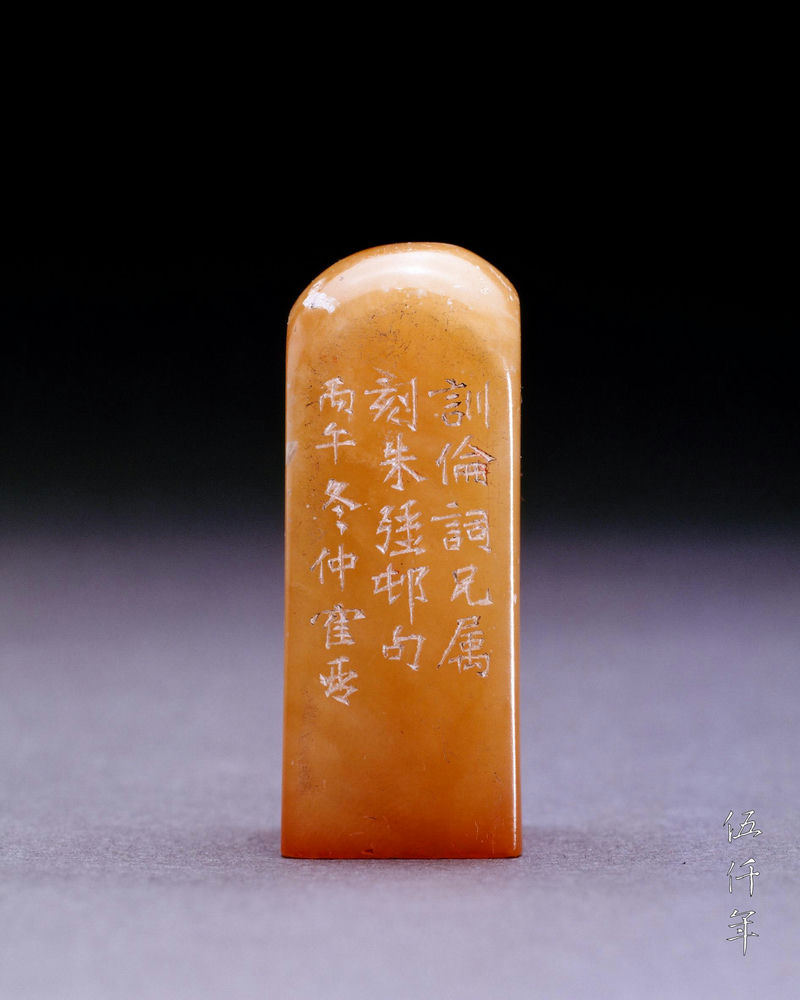
Side inscription of the seal carved with the characters “I have dispensed futile labour to become a lyric poet”
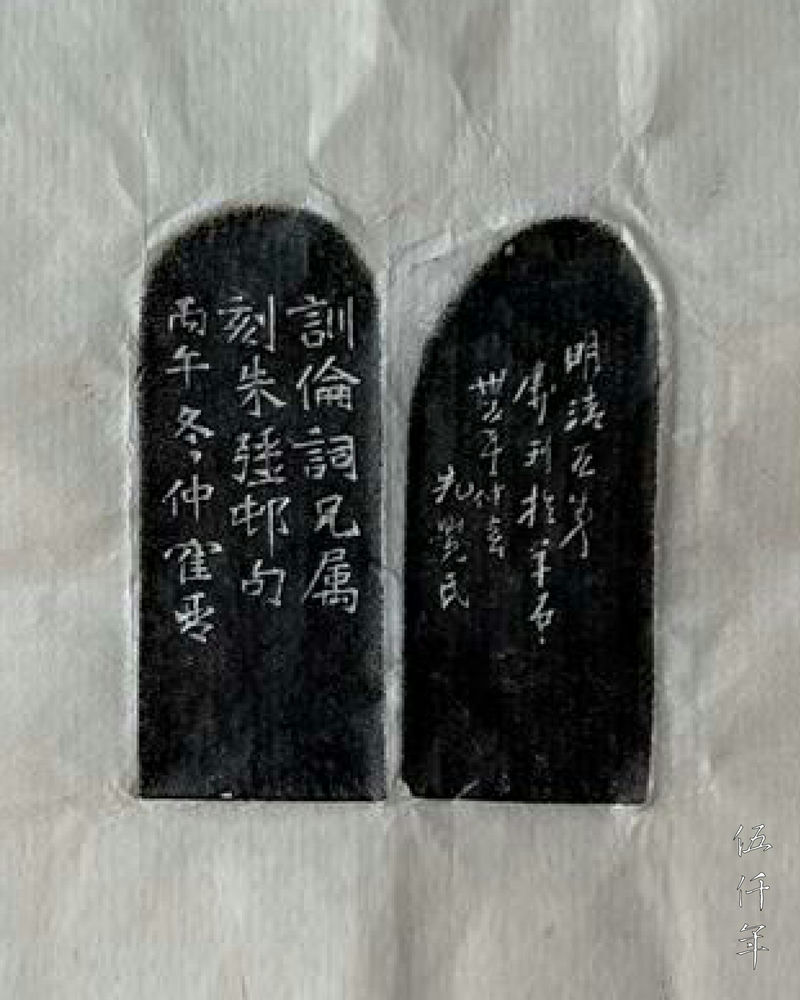
Ink rubbing of the side inscription of the seal carved with the characters “I have dispensed futile labour to become a lyric poet”
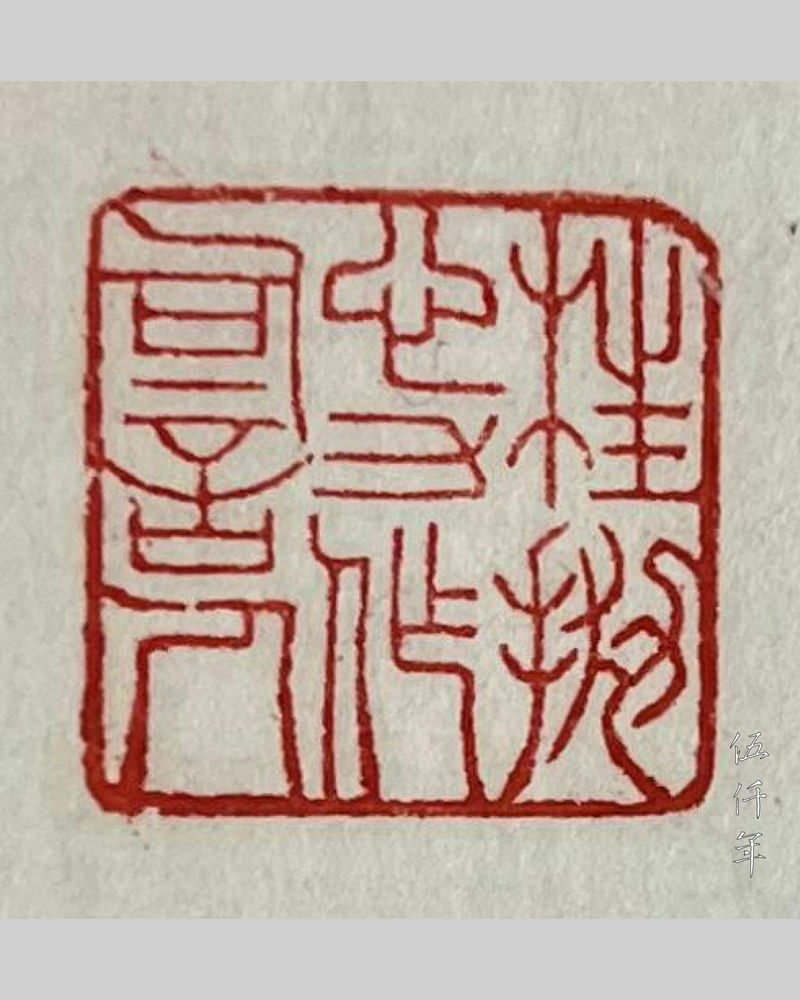
The seal impression “I have dispensed futile labour to become a lyric poet”
The seal “I have dispensed futile labour to become a lyric poet” was engraved by Uncle Chao Ho-ch’in. Uncle Chao Ho-ch’in (1894-1971), tzu Hsing-wu (惺吾), hao T’ien-ch’iao (鐵樵), and Tsang-hui Lao-jen (臧暉老人) in his old age. His studio names were O-ch’ih Hsüan (鵝池軒) and T’ao-chen Lou (陶真樓). He was a native of Yin-hsien, Chekiang Province. He was the grand nephew of Chao Shu-ju (趙叔孺 1874-1945) and inherited an eminent artistic lineage. He was accomplished in calligraphy, painting and distinguished in seal engraving. The engraved inscription on the side of the seal reads:
“Hsün-leng my elder brother, a poet of tz’u lyrics, asked me to engrave a sentence by Chu Chiang-kun (朱彊邨). November of ping-wu year. Ho-ch’in.”
Ping-wu year is the 55th year of the Republic, 1966. The sentence “I have dispensed futile labour to become a lyric poet” was derived from the poem The grave of Commander Ts’ai (蔡中郎墳) by Wen T’ing-yün (溫庭筠 812-870) of the T’ang dynasty (618-907). The poem reads:
Ancient grave crumbles by wild flowers in spring,
Commander’s spirit is said to have been reborn.
Adoration of talent is much less than before,
Don’t dispense futile labour to be a lyric poet.

The manuscript of the final tz’u lyric To the tune Che-ku T’ien by Ch’u Chiang-kun
Ch’u Chiang-kun (1857-1931), a distinguished tz’u poet and a close friend of my great grandfather the Hon. Soong Tzu-ho, composed his final tz’u lyric To the tune Che-ku T’ien (鷓鴣天) before passing away. It reads:
Loyalty and filial piety,
How scant have I braced.
Solaces from brothers,
Those years no more.
In my eyes my son,
Is this right or is this wrong?
After my death my wife,
Is this enmity or is this care ?
Affairs but shadows,
Life as water and cloud.
I have dispensed futile labour
To become a lyric poet.
Save this human world
For grief only.
Unlink the ties
From past karma.
For my father to ask Uncle Chao Ho-ch’in to engrave the sentence “I have dispensed futile labour to become a lyric poet”, his lamentations on life must be vehement.
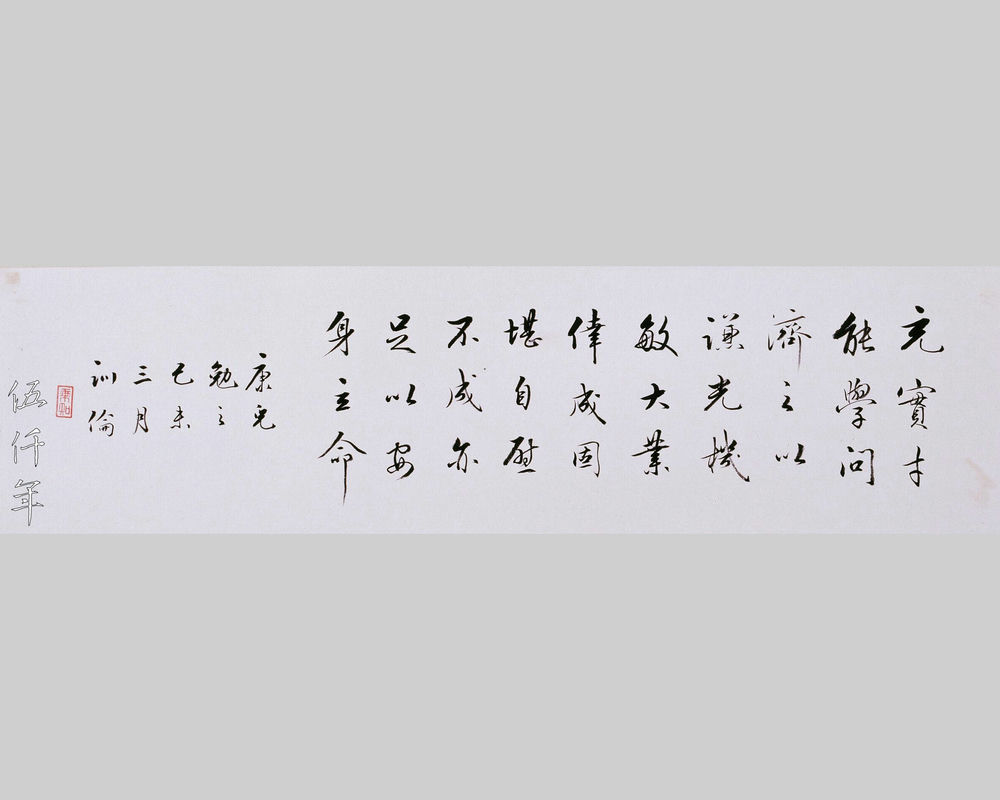
Horizontal calligraphic scroll by Mr. Soong Hsün-leng dated 1979
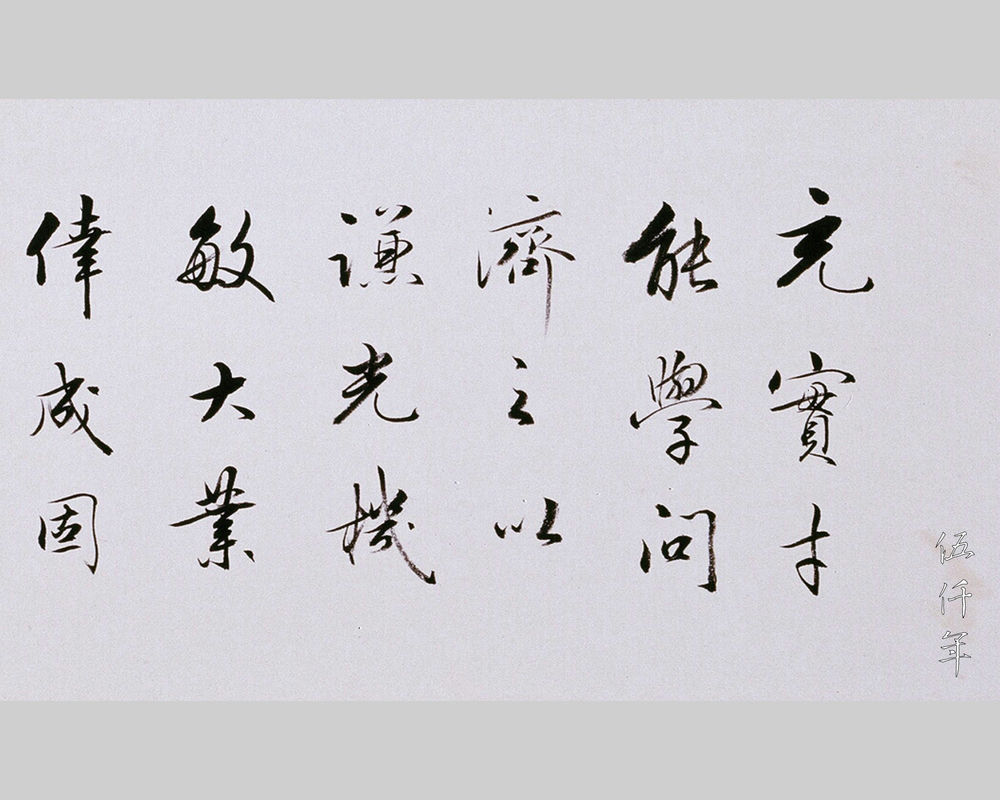
First detail of horizontal calligraphic scroll by Mr. Soong Hsün-leng dated 1979
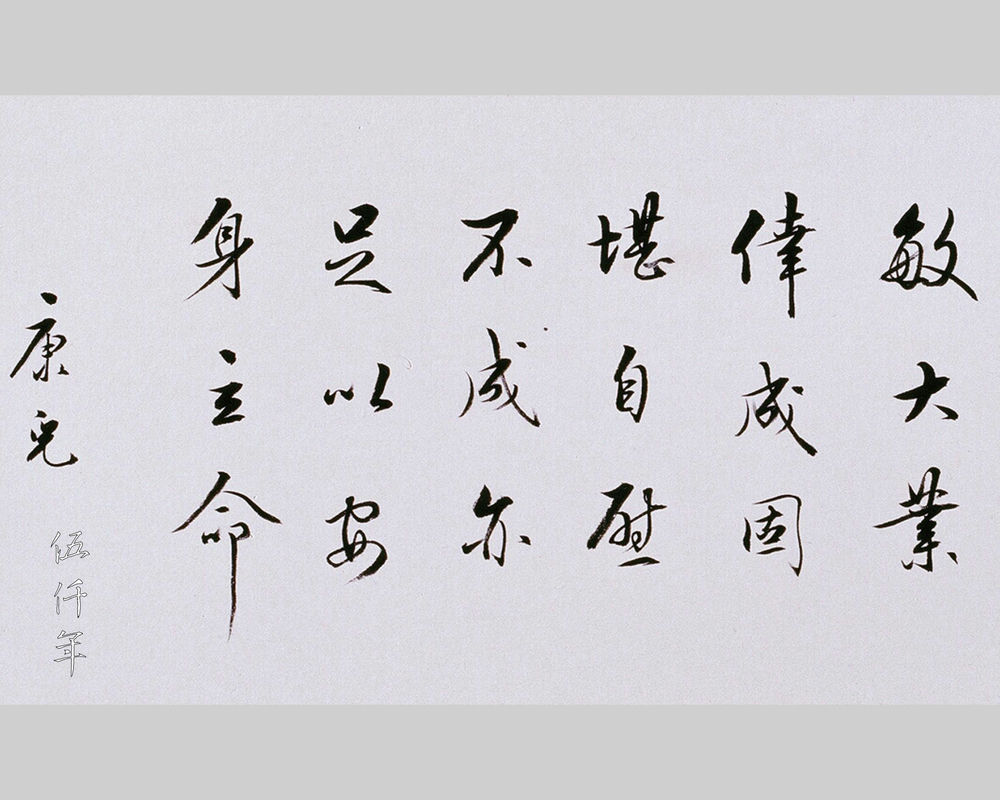
Second detail of horizontal calligraphic scroll by Mr. Soong Hsün-leng dated 1979
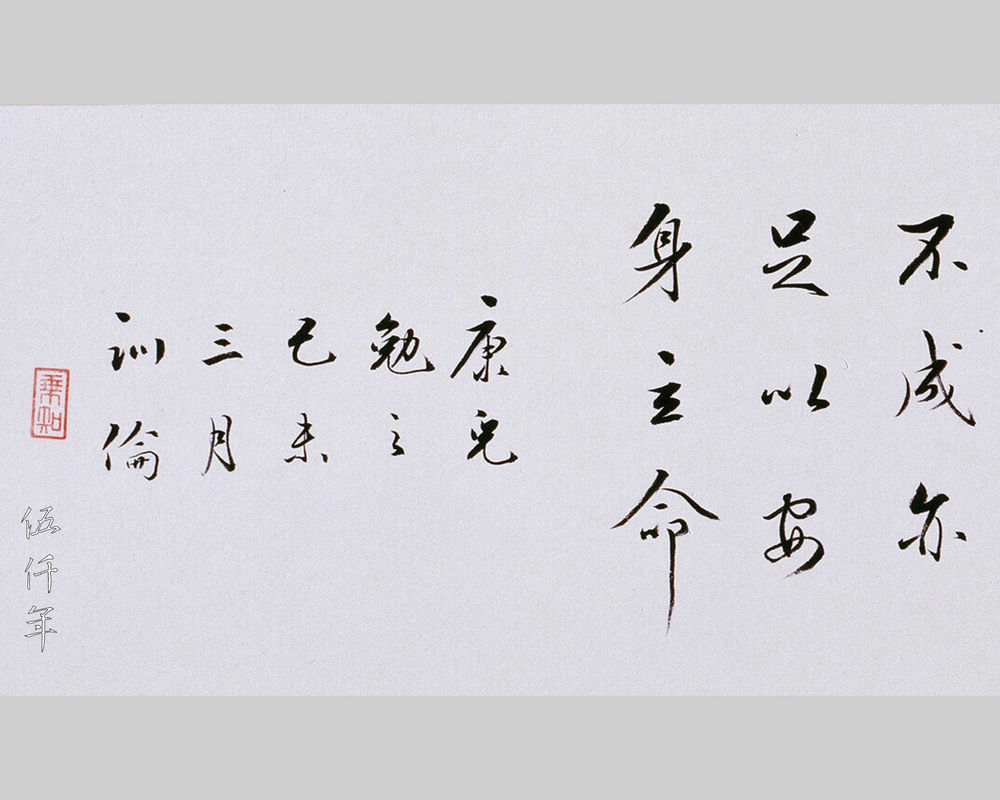
Third detail of horizontal calligraphic scroll by Mr. Soong Hsün-leng dated 1979
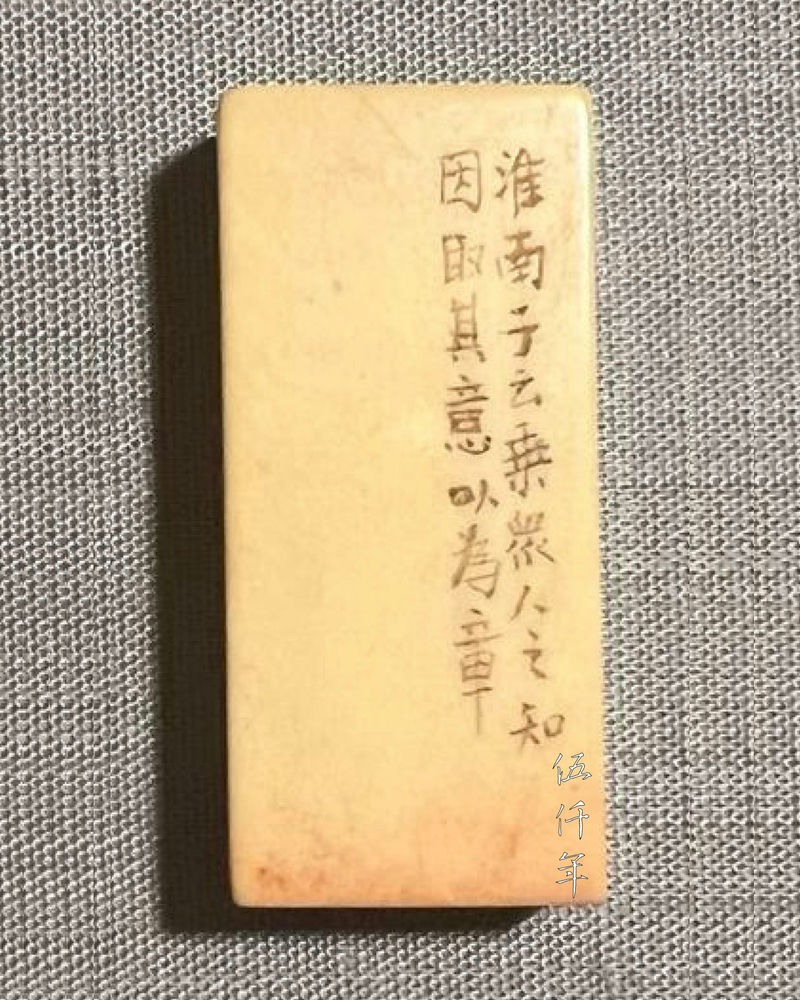
Side inscription of the seal carved with the characters “Passing on knowledge”
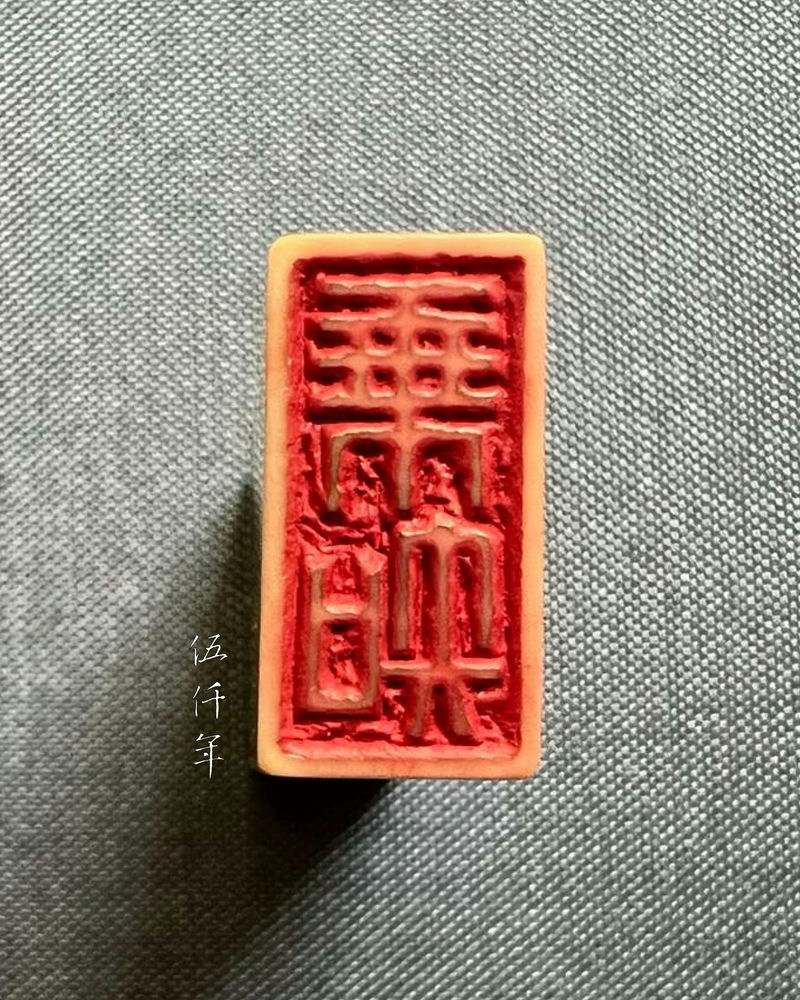
Engraved surface of the seal carved with the characters “Passing on knowlege”
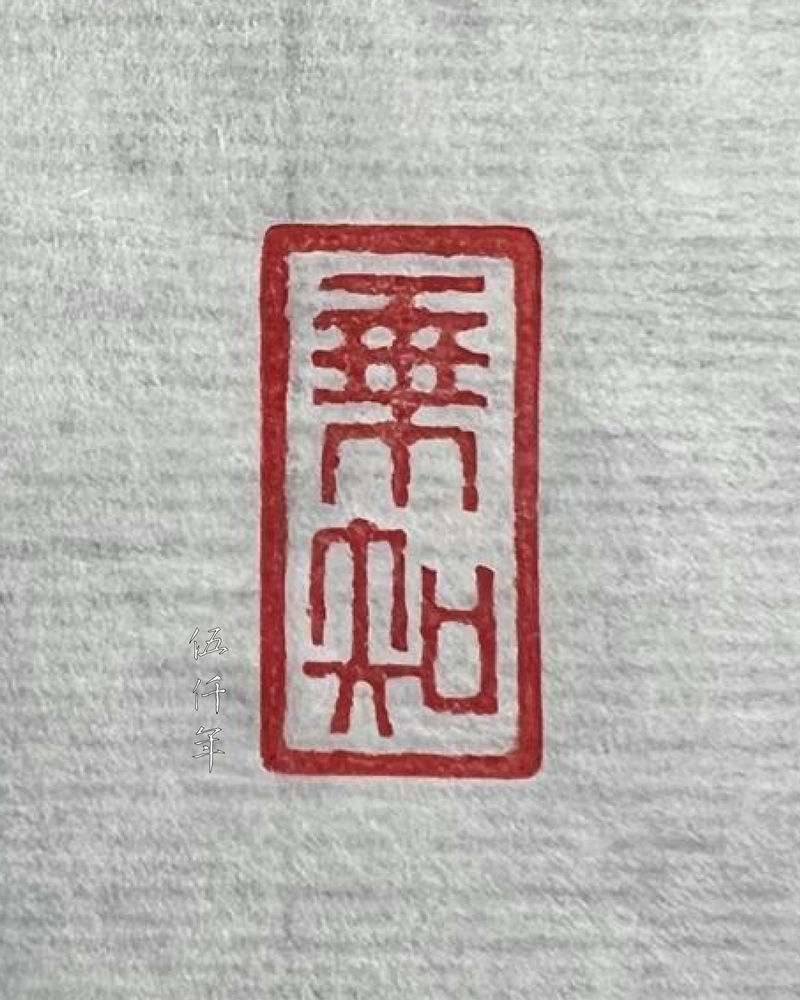
The seal impression “Passing on knowledge”
The horizontal scroll by my father mentioned in the letter was executed in the 68th year of the Republic (1979). Under the signature, there is only the seal impression “Passing on knowledge (垂知)”. It was erroneously recalled to be the “Seal of Soong Hsün-leng”. The text on the horizontal scroll reads:
“Enhance your ability and learning, abet by humility and astuteness. If great endeavour is attained by good fortune, it is admittedly cause for satisfaction. If not, these qualities are suffice to lead a settled life. Son Kong, be encouraged. March in chi-wei year. Hsün-leng.”
I was seventeen then, my father wrote this instruction from the depth of his heart.
After Aunt Chou Lien-hsia painted the prunus and the bamboo, in the beginning she might have concern about impressing her seal. Later on, she did not manage to affix the seal impression neither. She visited Hong Kong in July and August, 1986. One might conjecture that she forgot to bring her seal. A few years later, because of the looming takeover of Hong Kong by mainland China, my father relocated to Bangkok. Aunt Chou Lien-hsia continued to stay in America, and that was the end of finding an opportunity to affix her seal.
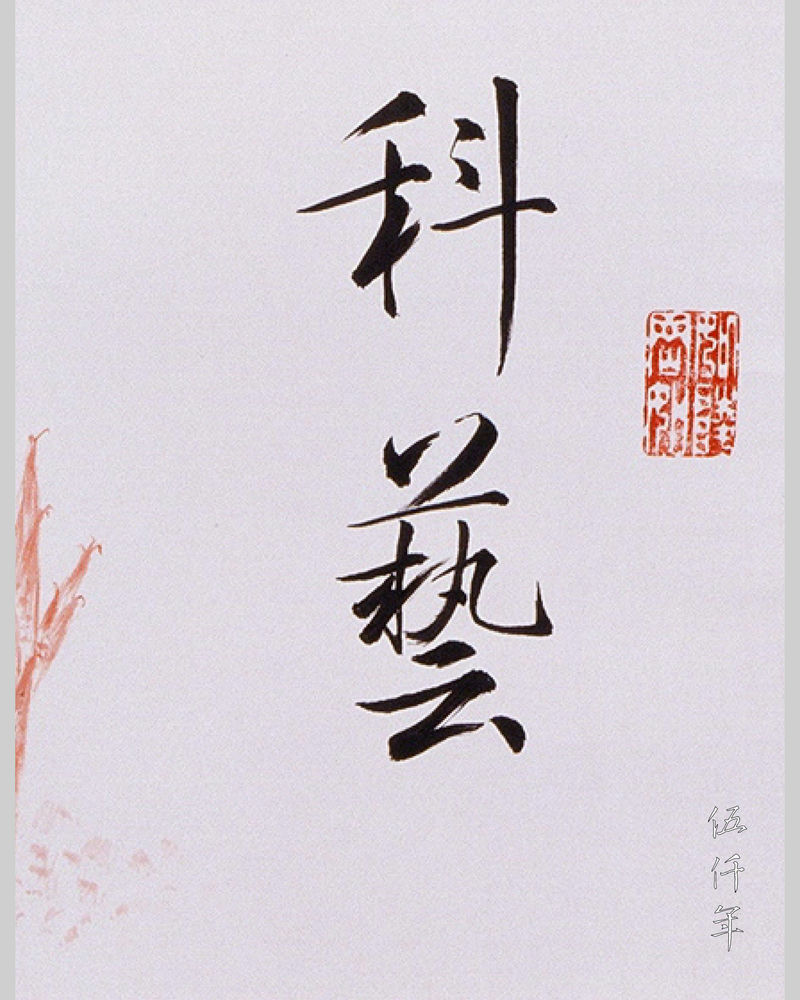
The seal impression “Like ridge like hill” was affixed on the lower part of the right couplet (upper scroll)
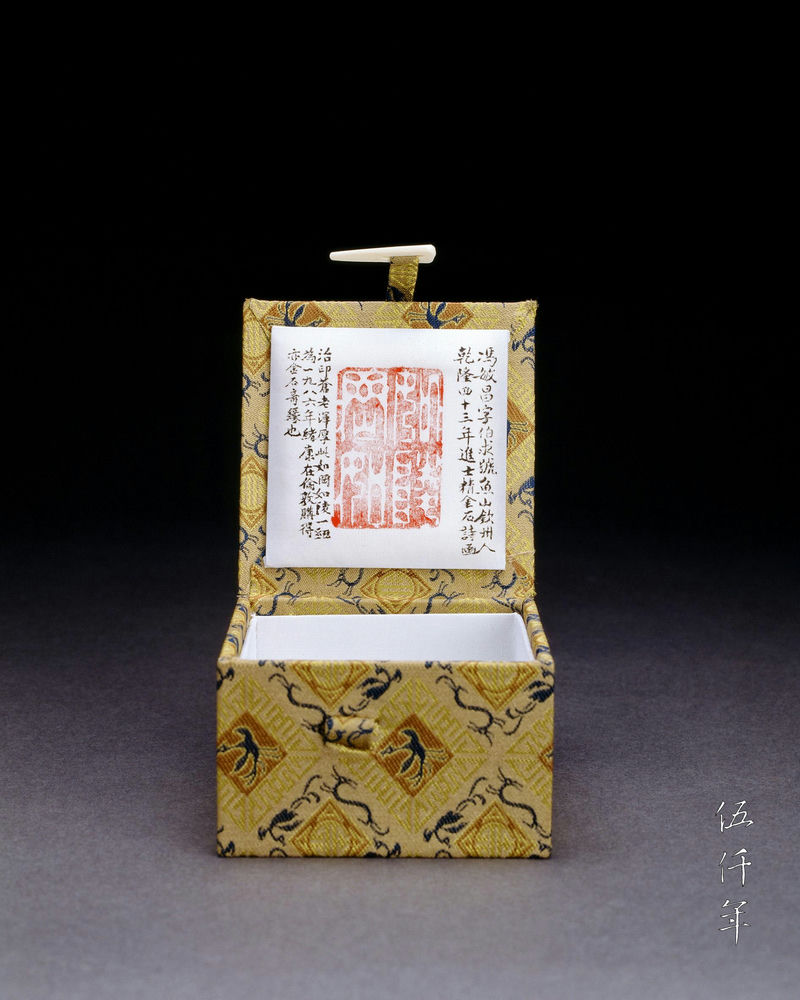
The brocade box that stores the seal ”Like ridge like hill” with calligraphic inscription by Mr. Soong Hsün-leng on the back of the lid
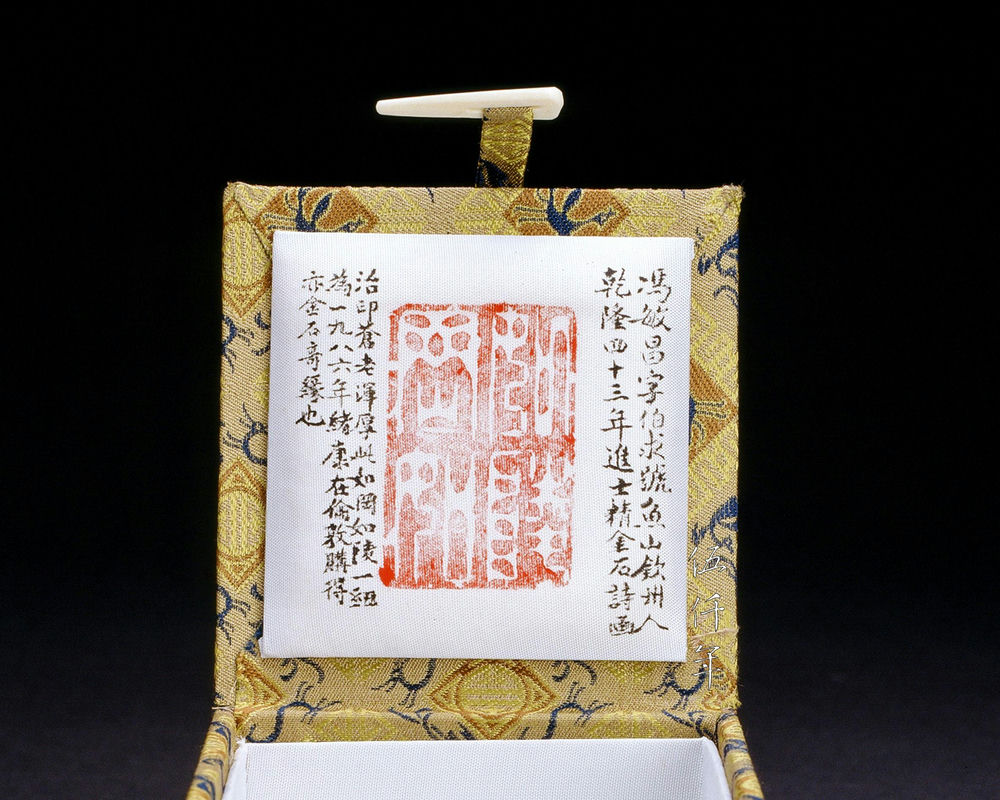
Detail of the calligraphic inscription by Mr. Soong Hsün-leng beside the seal impression of “Like ridge like hill”
It is uncertain when the seal carved with the palindrome phrase : “Like ridge like hill (如岡如陵)” was impressed on the right couplet (upper scroll).
The seal “Like ridge like hill” was engraved by Feng Min-ch’ang (馮敏昌 1741-1806). In the 75th year of the Republic (1986), I acquired the seal from Sydney L. Moss Ltd., a Chinese antique shop in London. My father inscribed the title slip and the interior of the brocade box. The words in the interior are:
“Feng Min-ch’ang, tzu Po-ch’iu (伯求), hao Yü-shan (魚山), native of Ch’in-chou. He attained the chin-shih degree in the 43rd year of the Ch’ien-lung reign. He excelled in seal engraving, poetry and painting. His engravings were vigorous, deep and resonant. This seal with the characters ‘Like ridge like hill’ was acquired by Shu Kong in London in 1986. It was a fortuitous encounter with epigraph.”
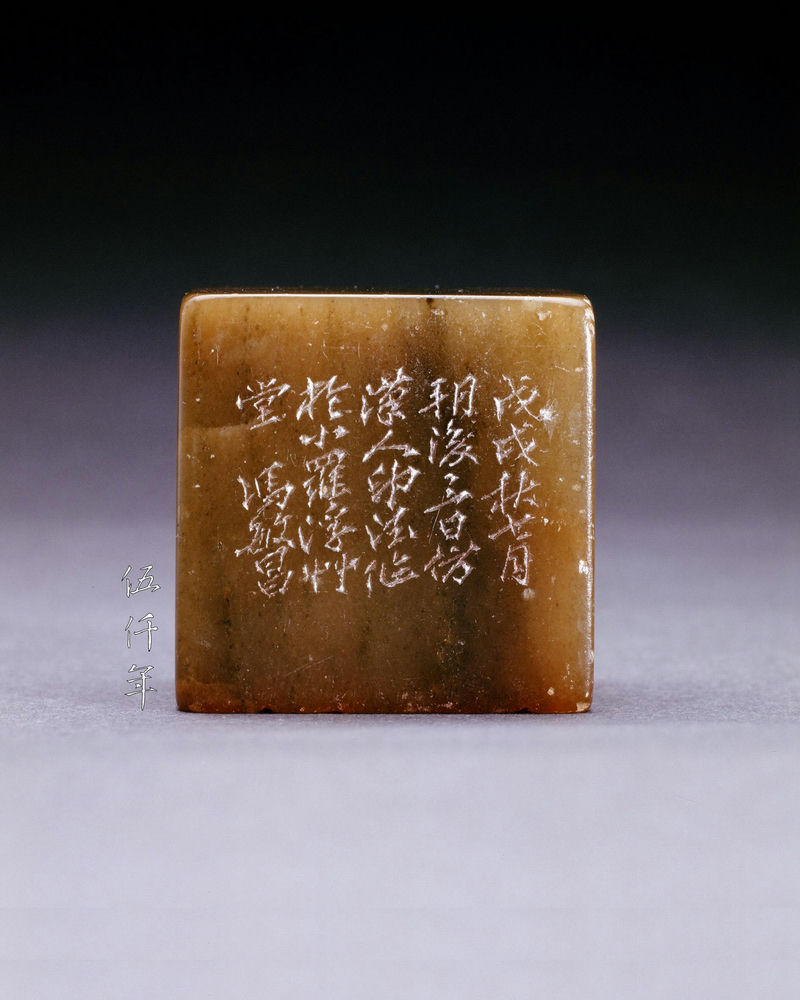
Side inscription of the seal carved with the characters “Like ridge like hill”
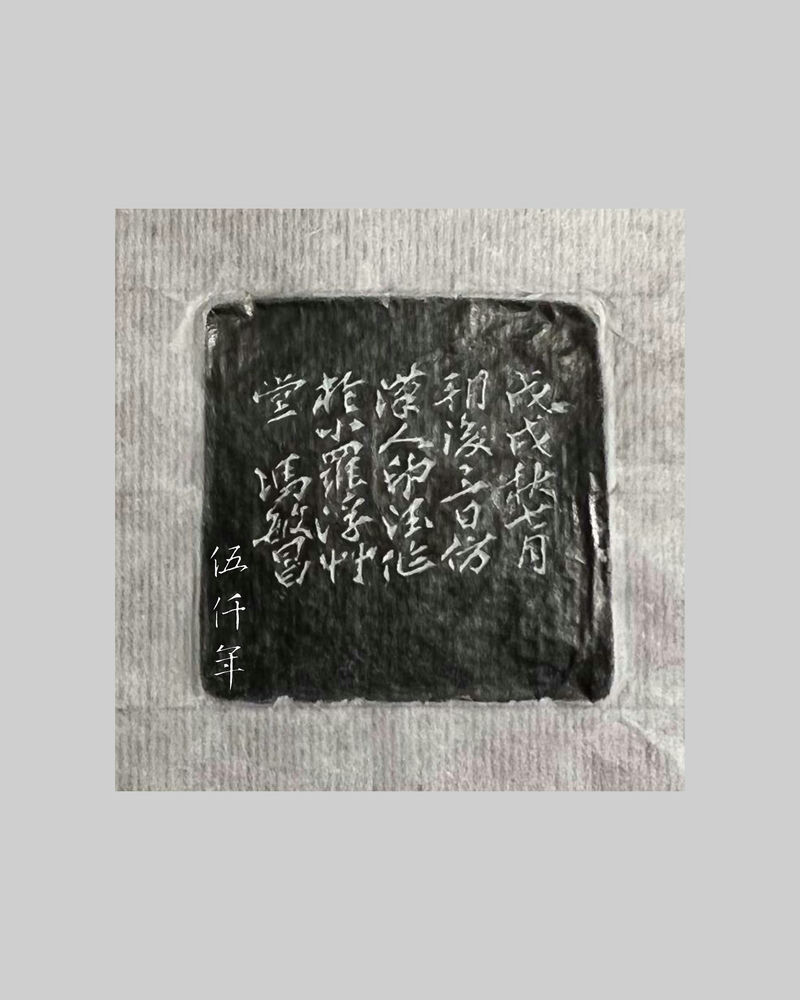
Ink rubbing of the side inscription of the seal carved with the characters “Like ridge like hill”
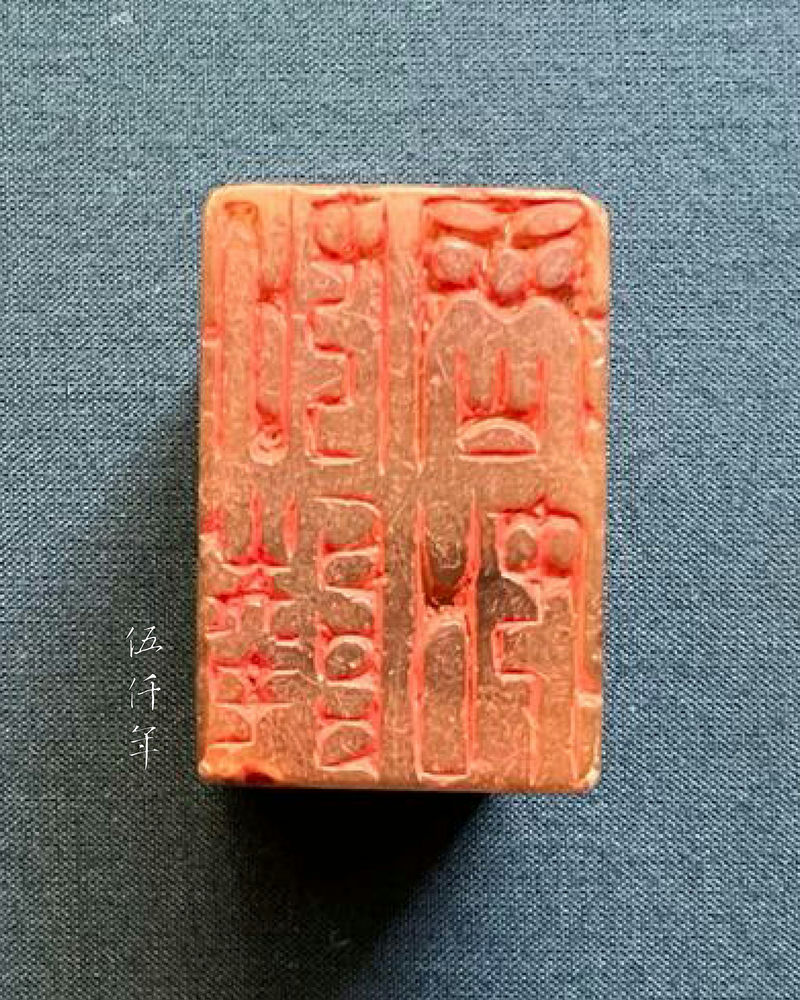
Engraved surface of the seal carved with the characters “Like ridge like hill”
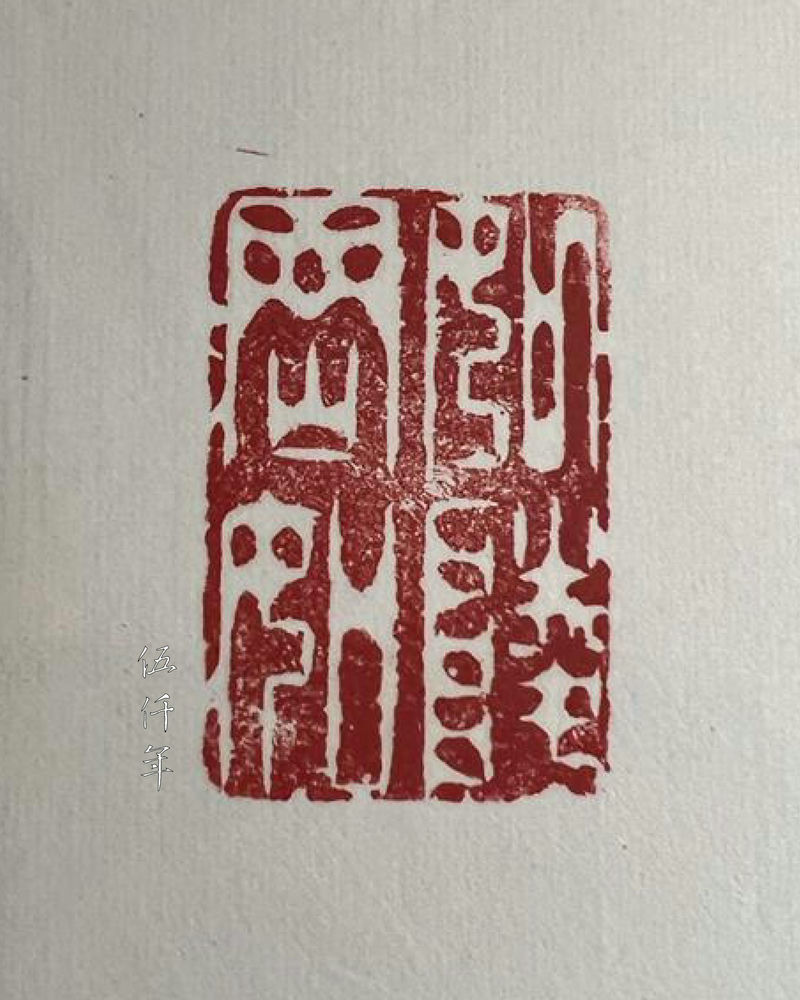
The seal impression “Like ridge like hill”
On the side of the “Like ridge like hill” seal, there is an engraved inscription with these words:
“On 3rd July in the autumn of wu-hsü year, I imitated the seals carved in the Han dynasty. This was engraved in Hsiao-lo-fu Ts’ao-t’ang (小羅浮草堂). Feng Min-ch’ang.”
This seal was engraved in July of wu-hsü year. It is the equivalent of the 43rd year of the Ch’ien-lung reign, 1778. In spring that year Feng Min-ch’ang took the imperial examination and attained his chin-shih degree and was ranked Second Class Number Forty Second. He was thirty two years of age, at the height of his scholarly achievements, and carved this seal to mark the moment in a mood of elation. The phrase ‘Like ridge like hill” on the seal was intended to be used for self-motivation and self-reflection by Feng Min-ch’ang. My father affixed this seal impression on the couplet, his expectation was apparent.
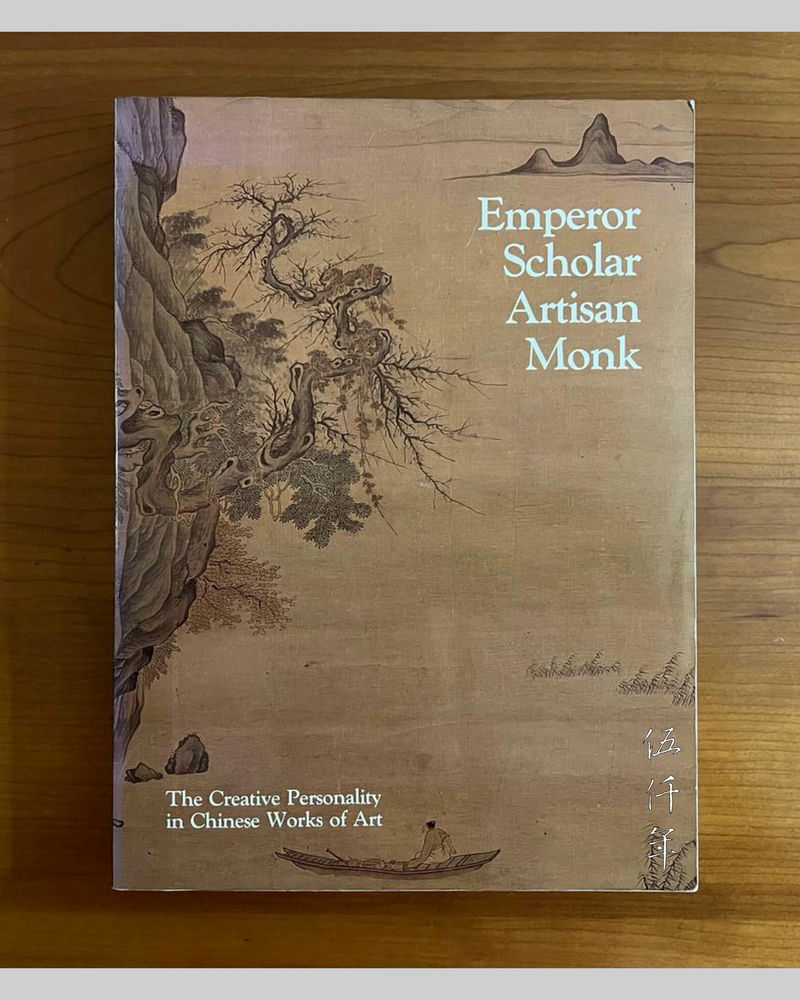
Exhibition catalogue “Emperor, Scholar, Artisan, Monk” produced by Sydney L. Moss in 1984
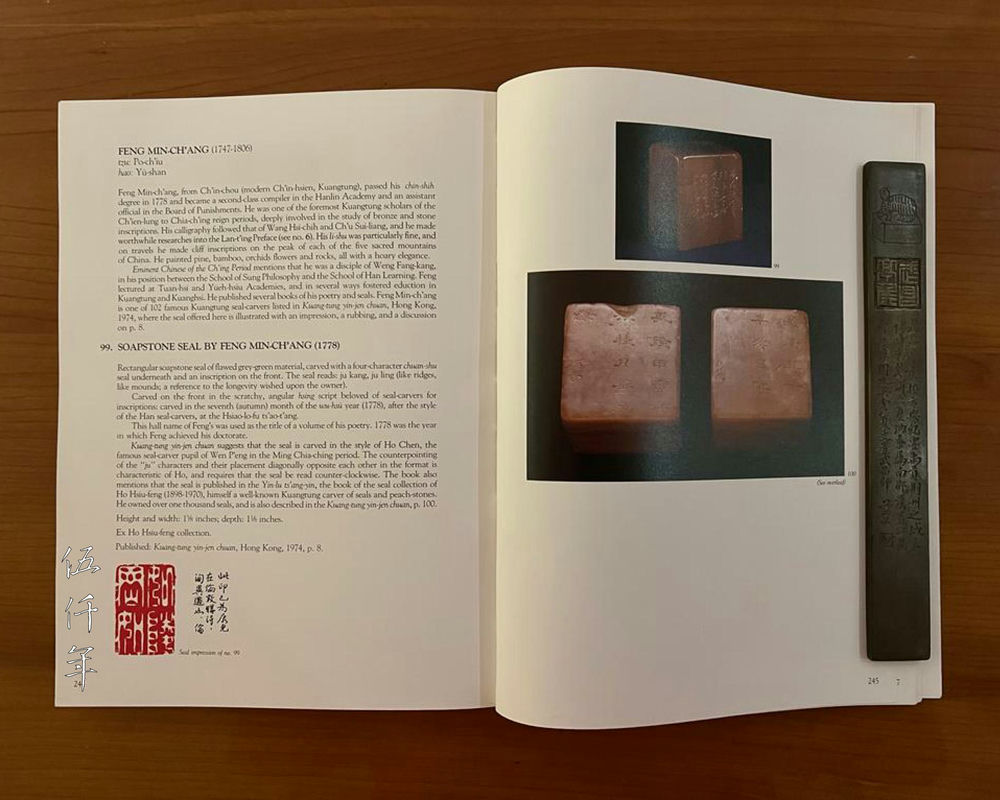
Description of the seal “Like ridge like hill” on page 244 in the exhibition catalogue “Emperor, Scholar, Artisan, Monk” produced by Sydney. L. Moss in 1984
Seals by Feng Min-ch’ang are very rare. In the Biographies of Cantonese Seal Engravers (廣東印人傳) compiled by Mr. Ma Kuo-ch’ üan (馬國權), two seals are documented, one is ‘Like ridge like hill”, the other is “Ancient wood lying across the wilderness”. These may be the only two extant seals by Feng Min-ch’ang.
The format of calligraphy couplets started in the Ming dynasty and flourished in the Ch’ing dynasty. Pictorial embellishment on couplets by eminent artist is rare indeed. This painting is also the only pictorial work on a pair of couplets by Aunt Chou Lien-hsia. The seal impressions on the couplets compose an extraordinary spectacle. There is a seal impression with a phrase for self-reflection from my father, there is a seal impression with a phrase for self-scrutiny from my great grandfather, there is a seal impression with a phrase for self-commitment from a virtuous forefather, connecting each other through a stretch of two hundred years. I have let the years dart by in futility, unable to even realize a fraction of my father’s teachings. Hanging the pair of couplets in the room, what can I tell my father?
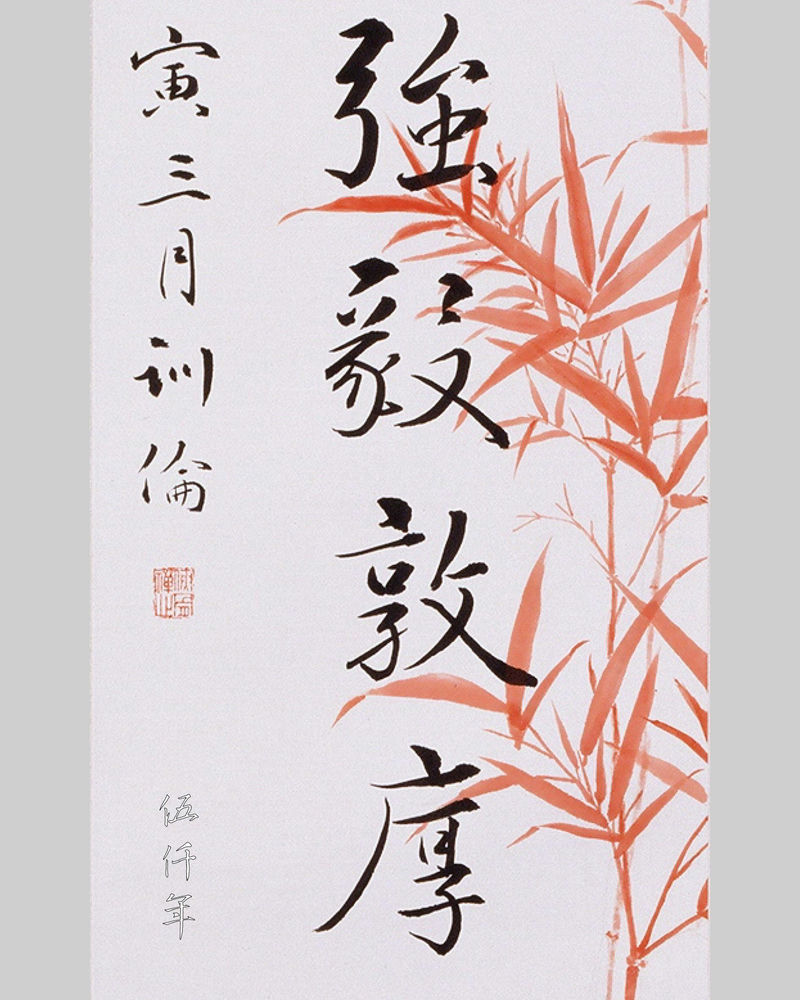
Detail of left couplet (lower scroll) with signature by Mr. Soong Hsün-leng
Related Contents:
An Autobiographical Letter by Chou Lien-hsia (周鍊霞), the Female Poetress and Painter, by Ch’en Lun
